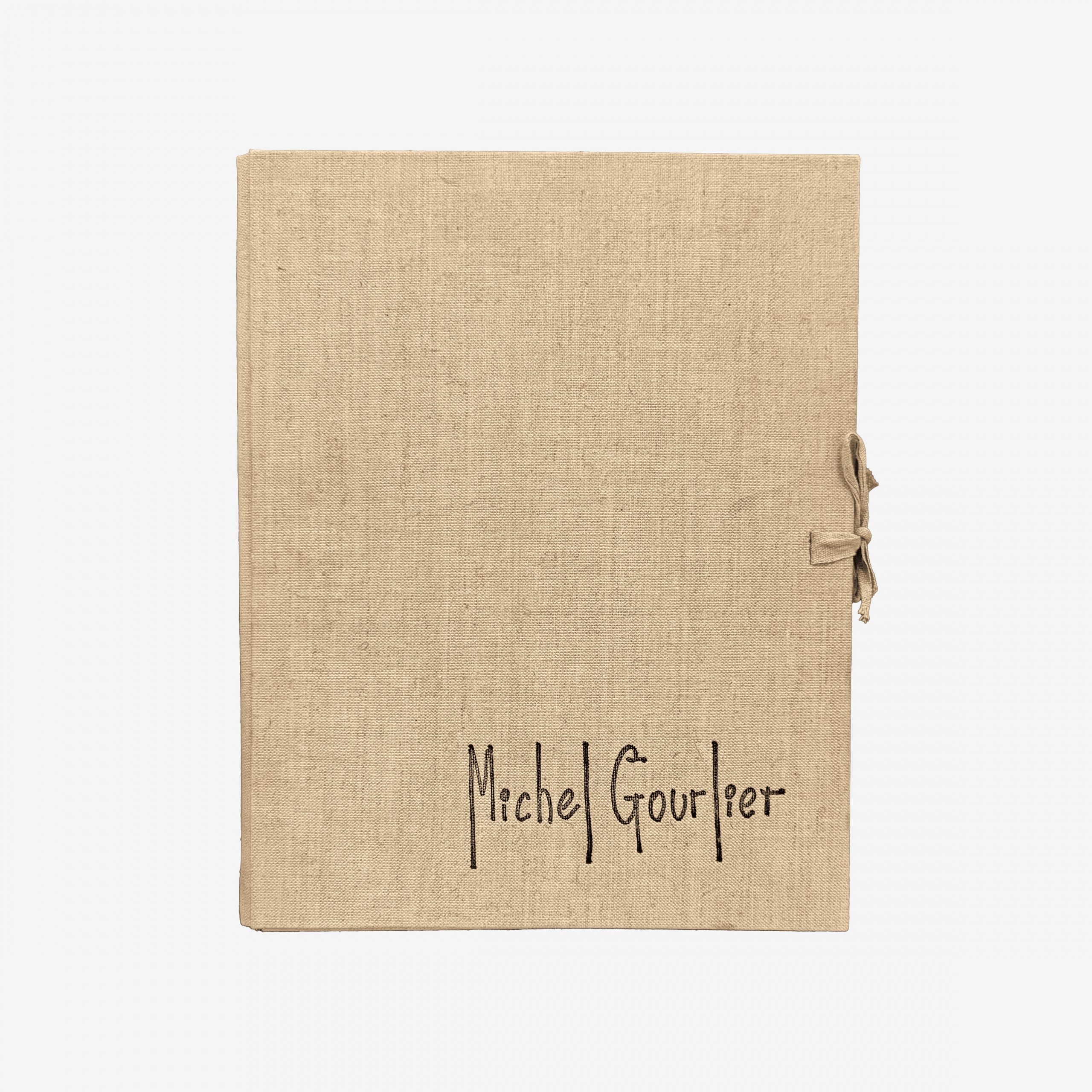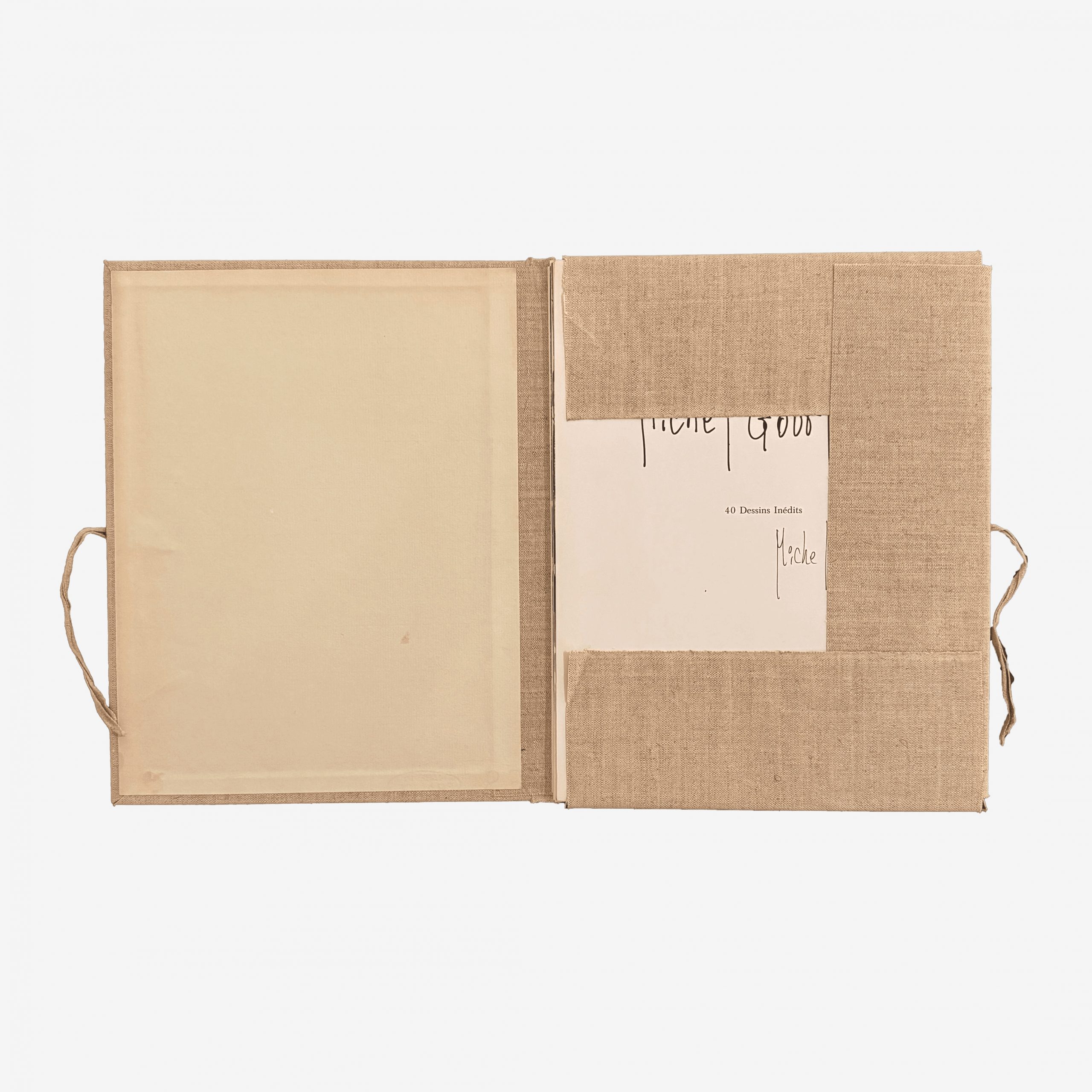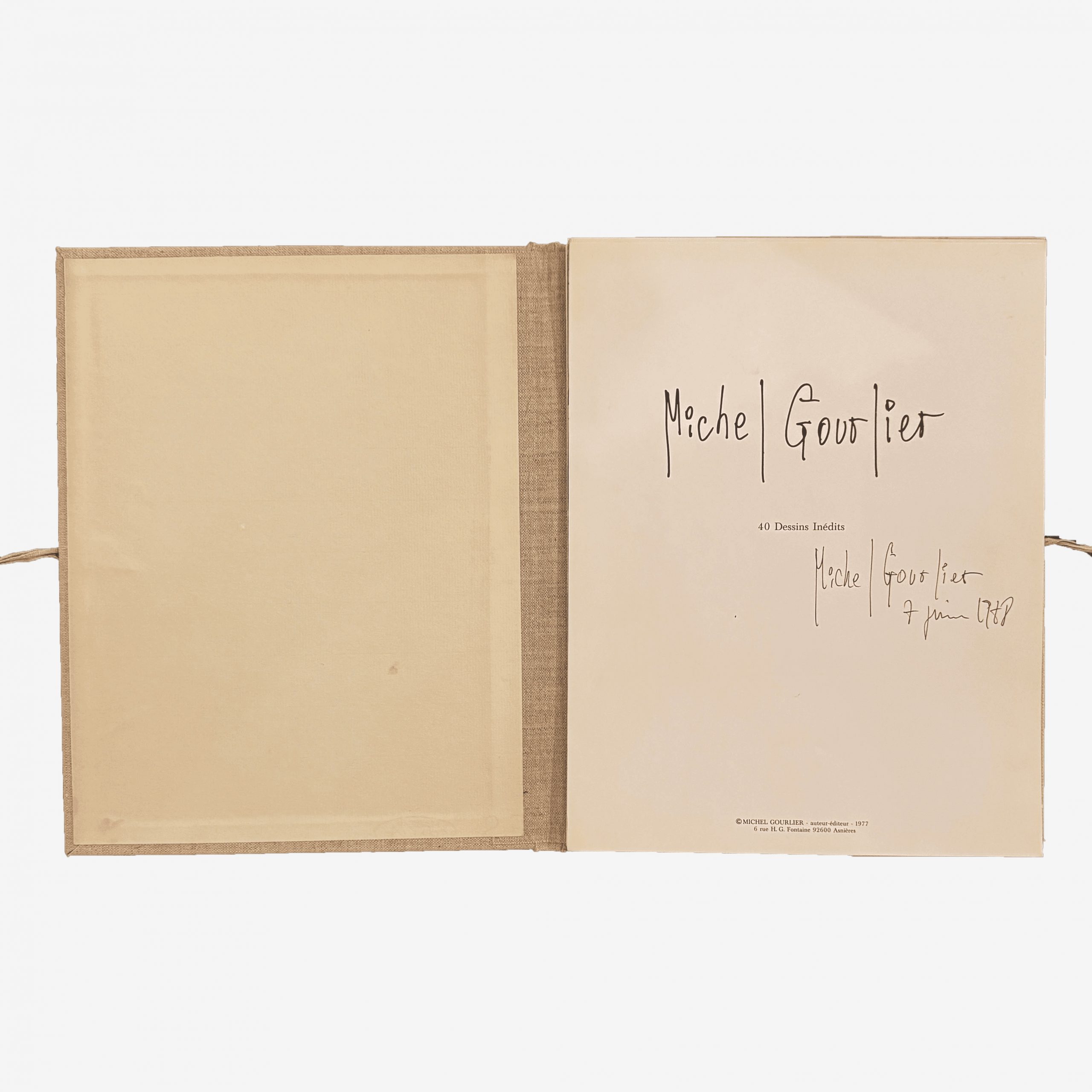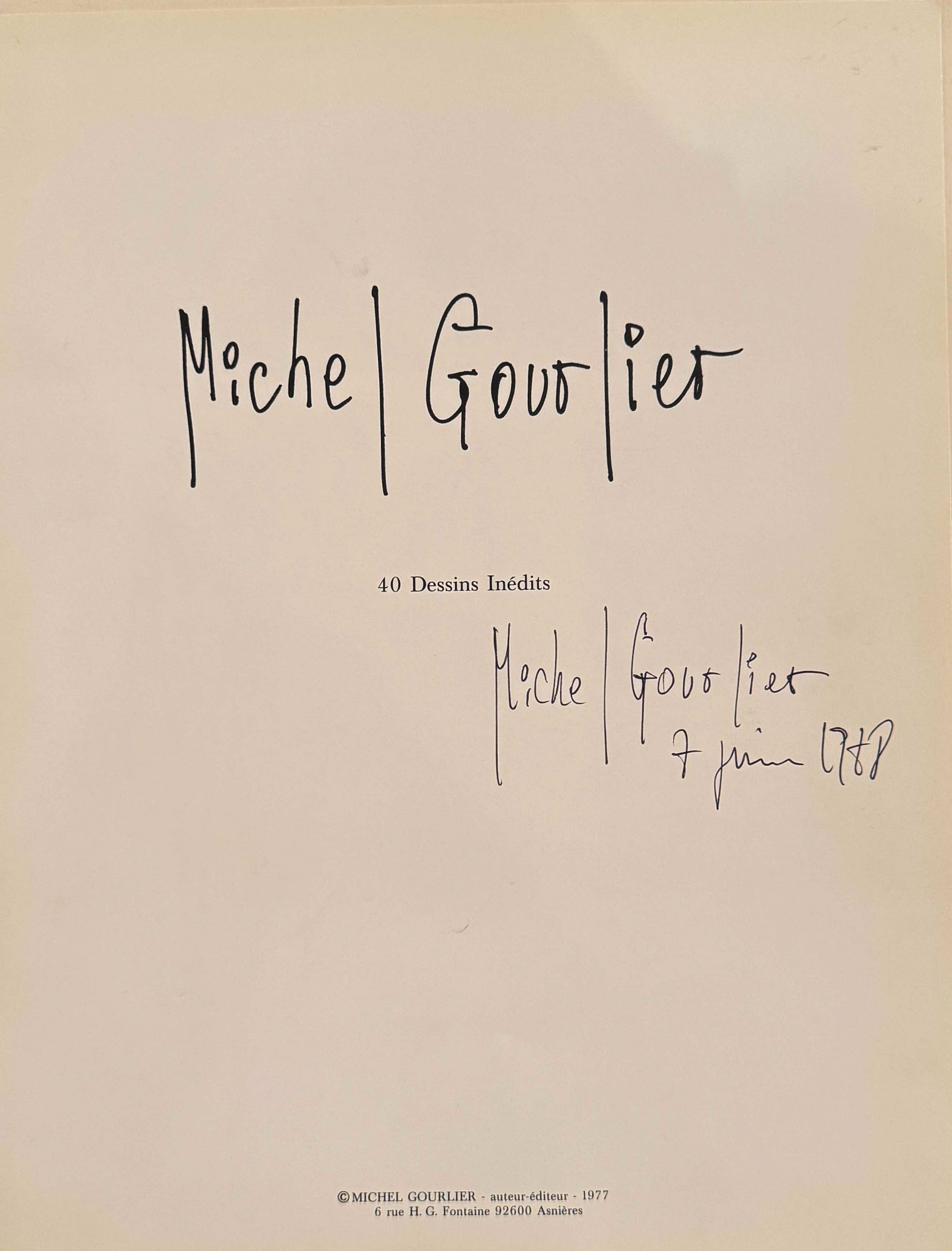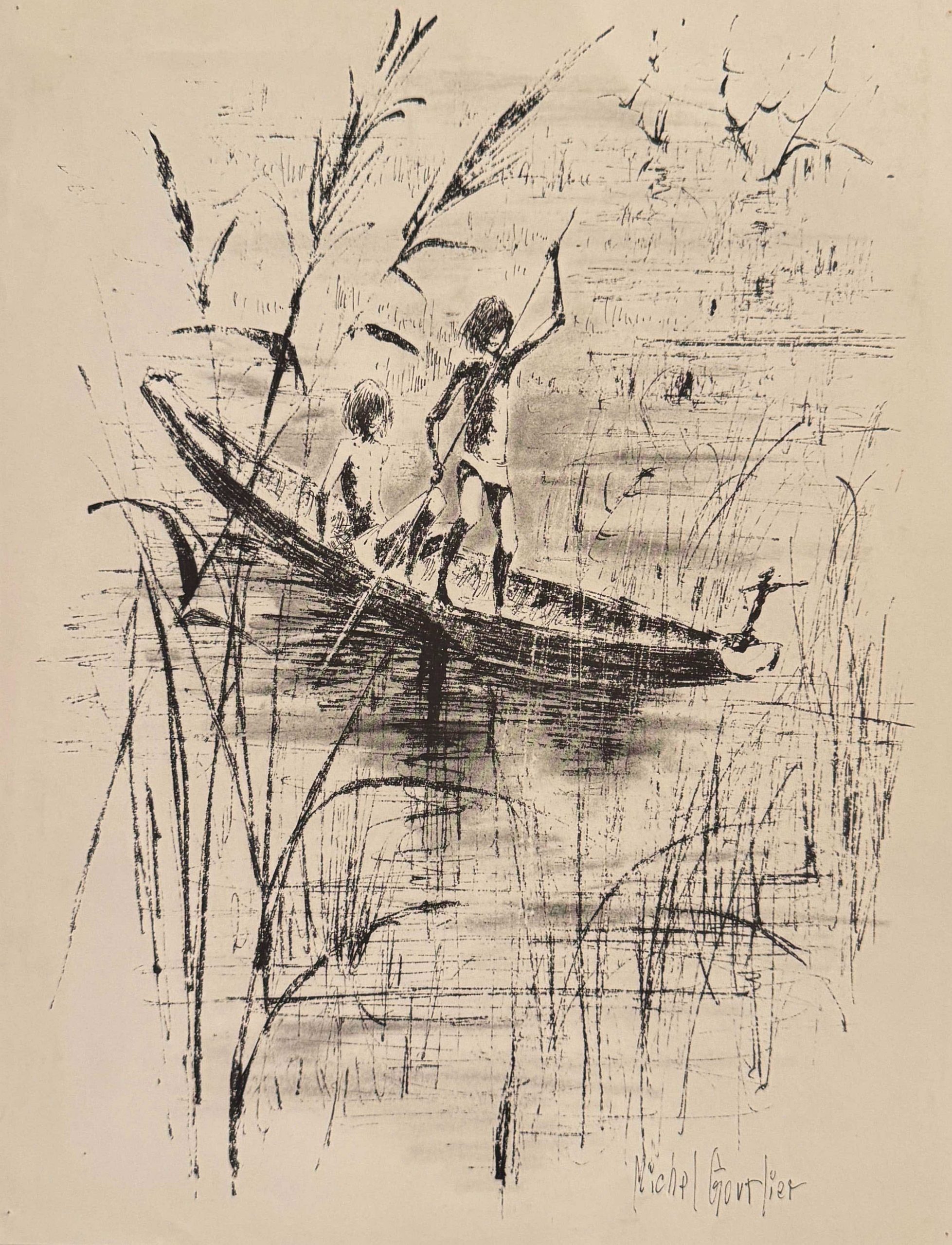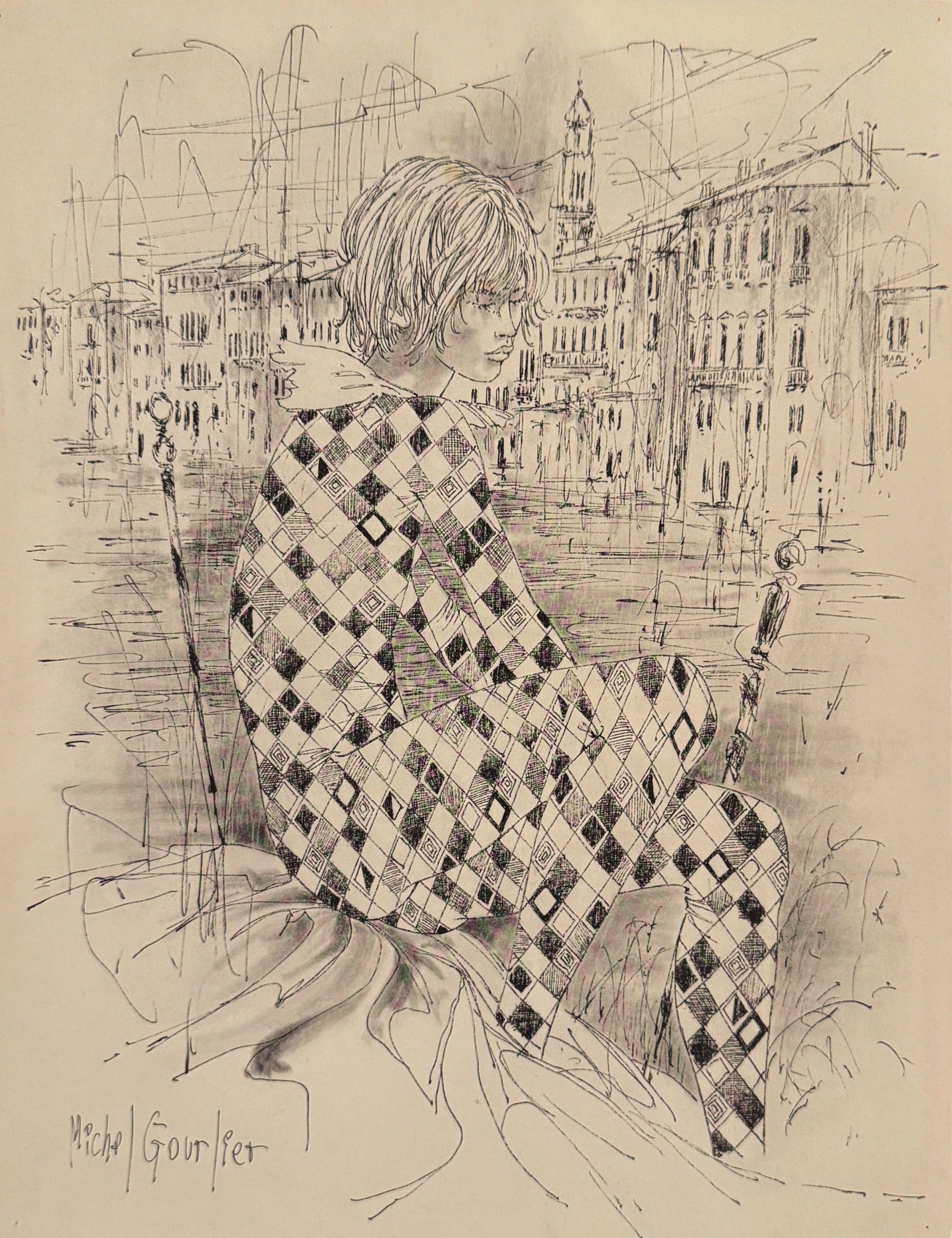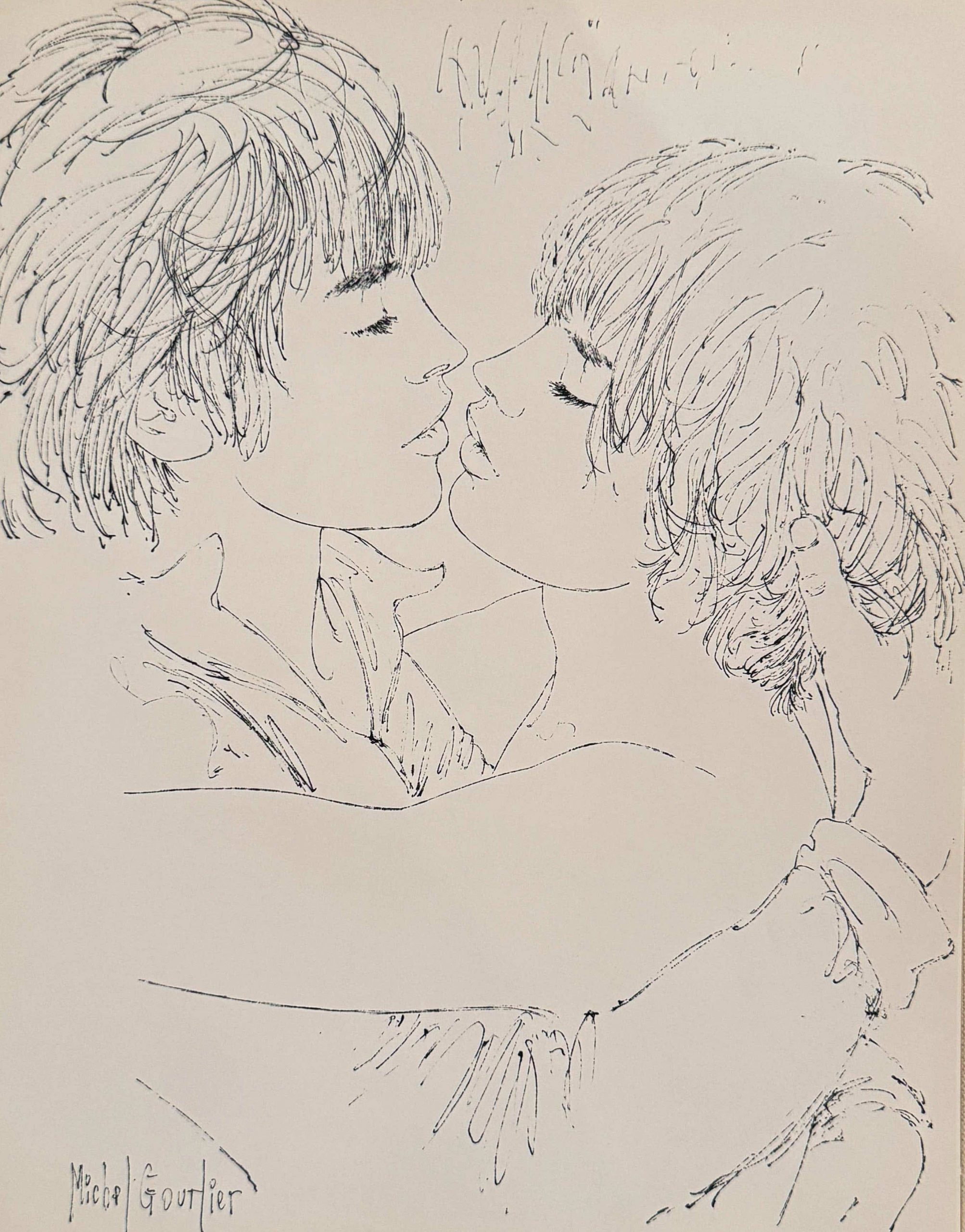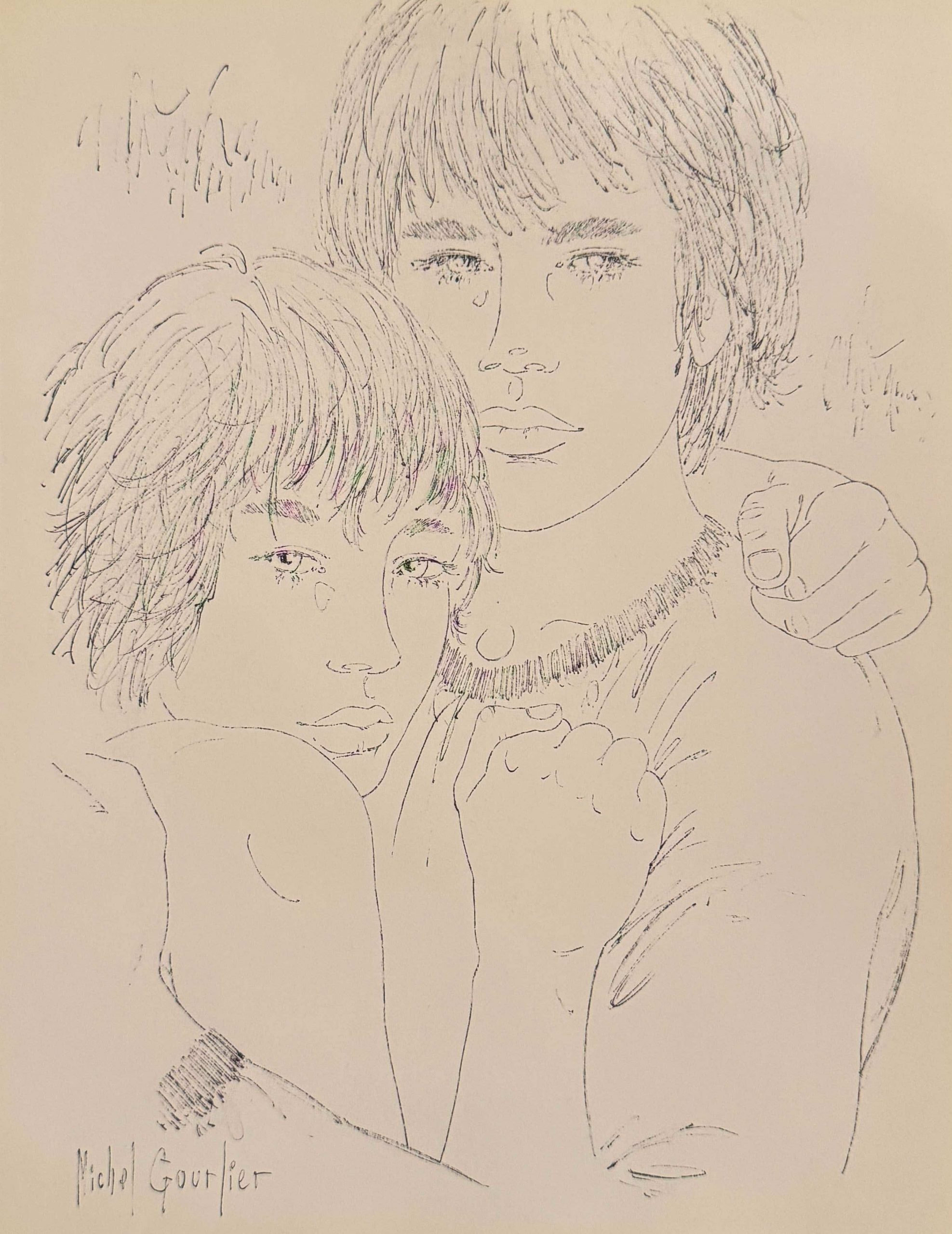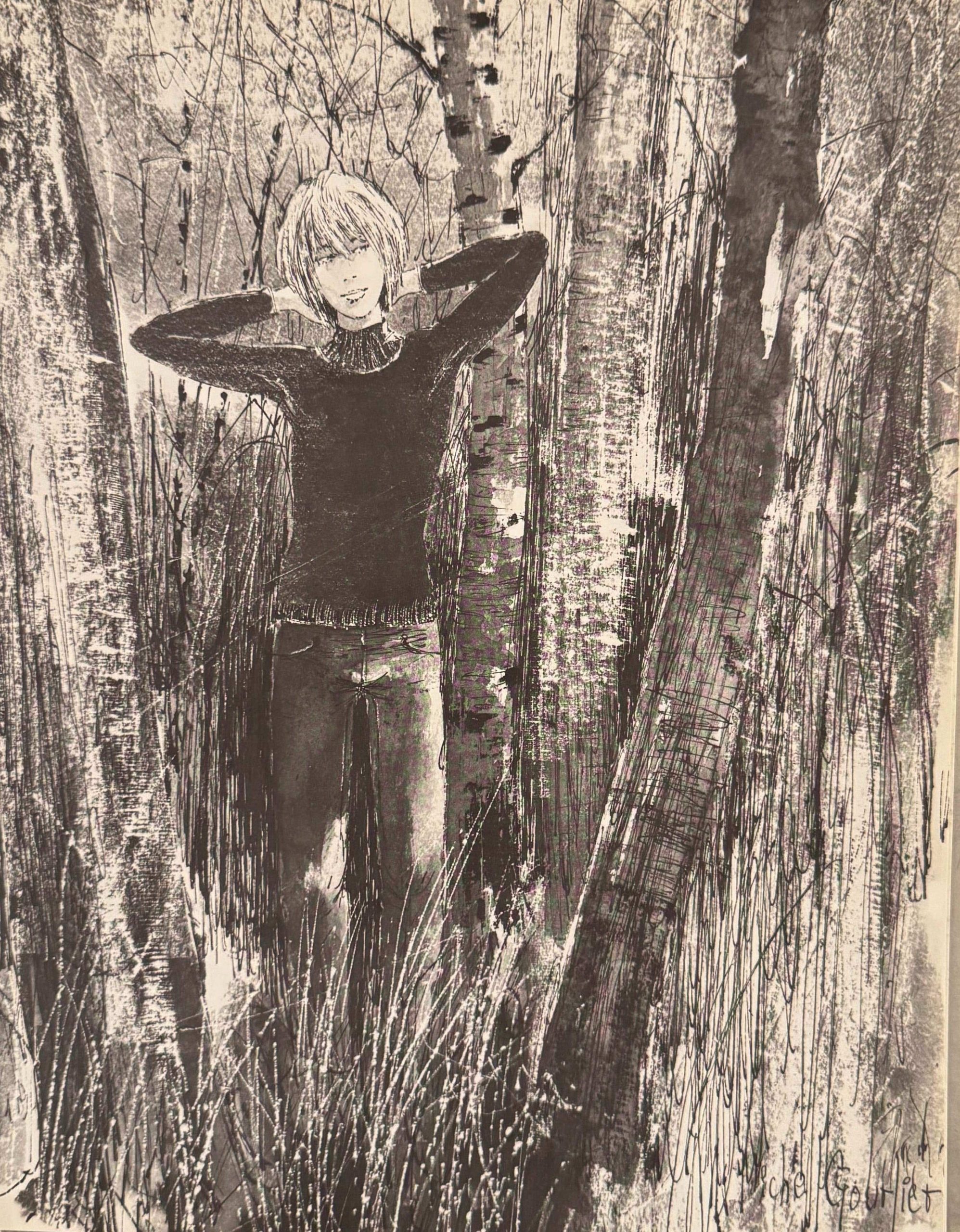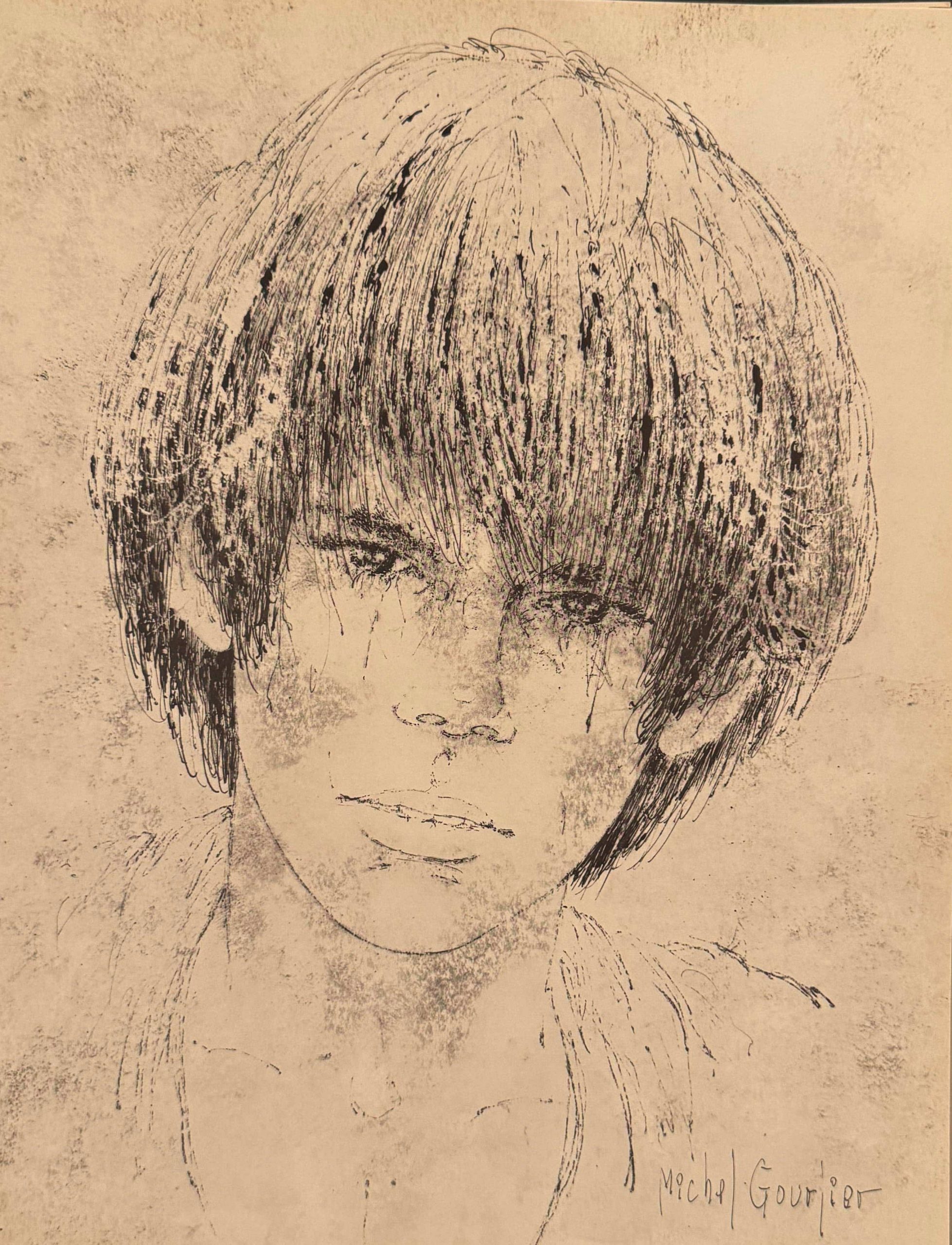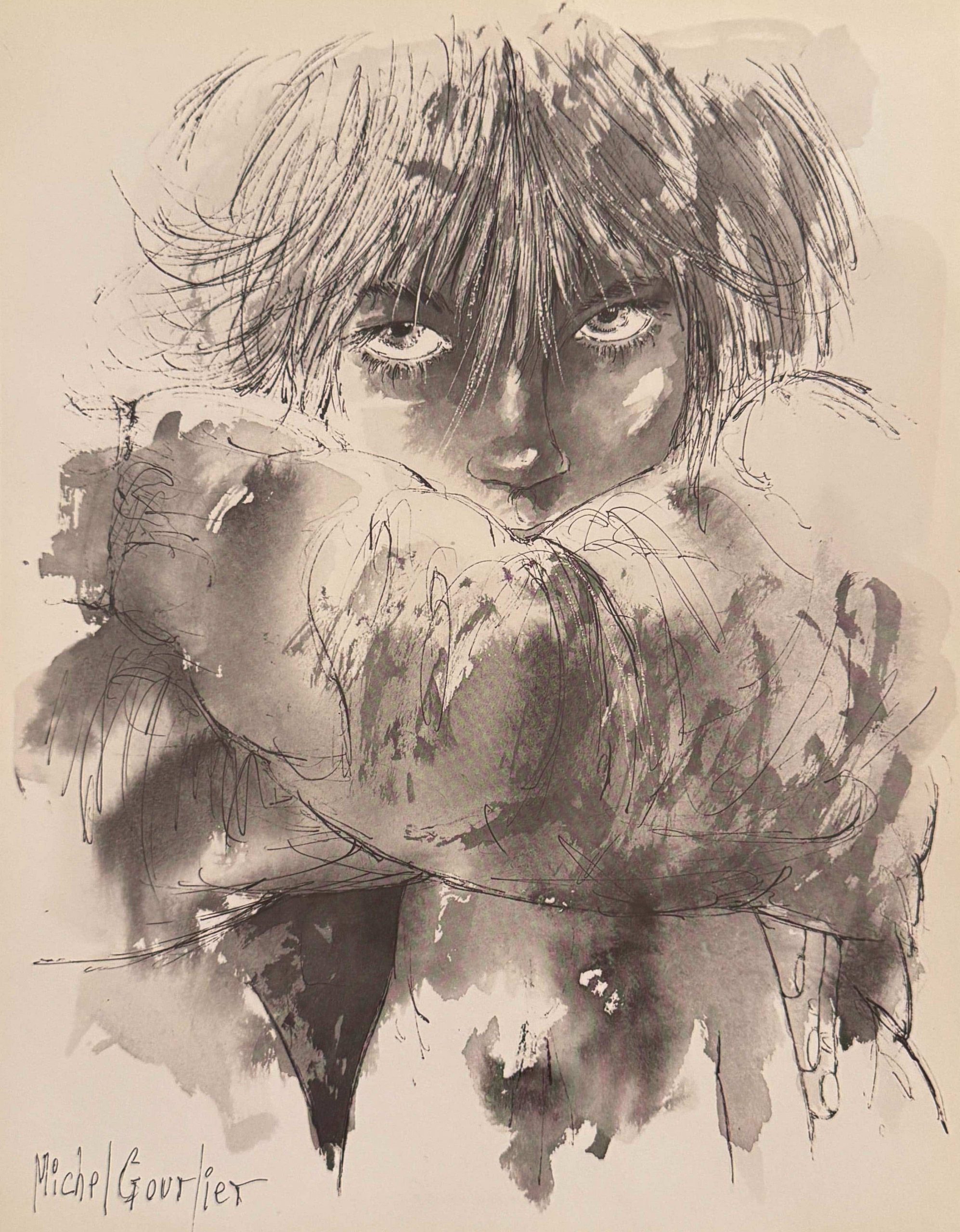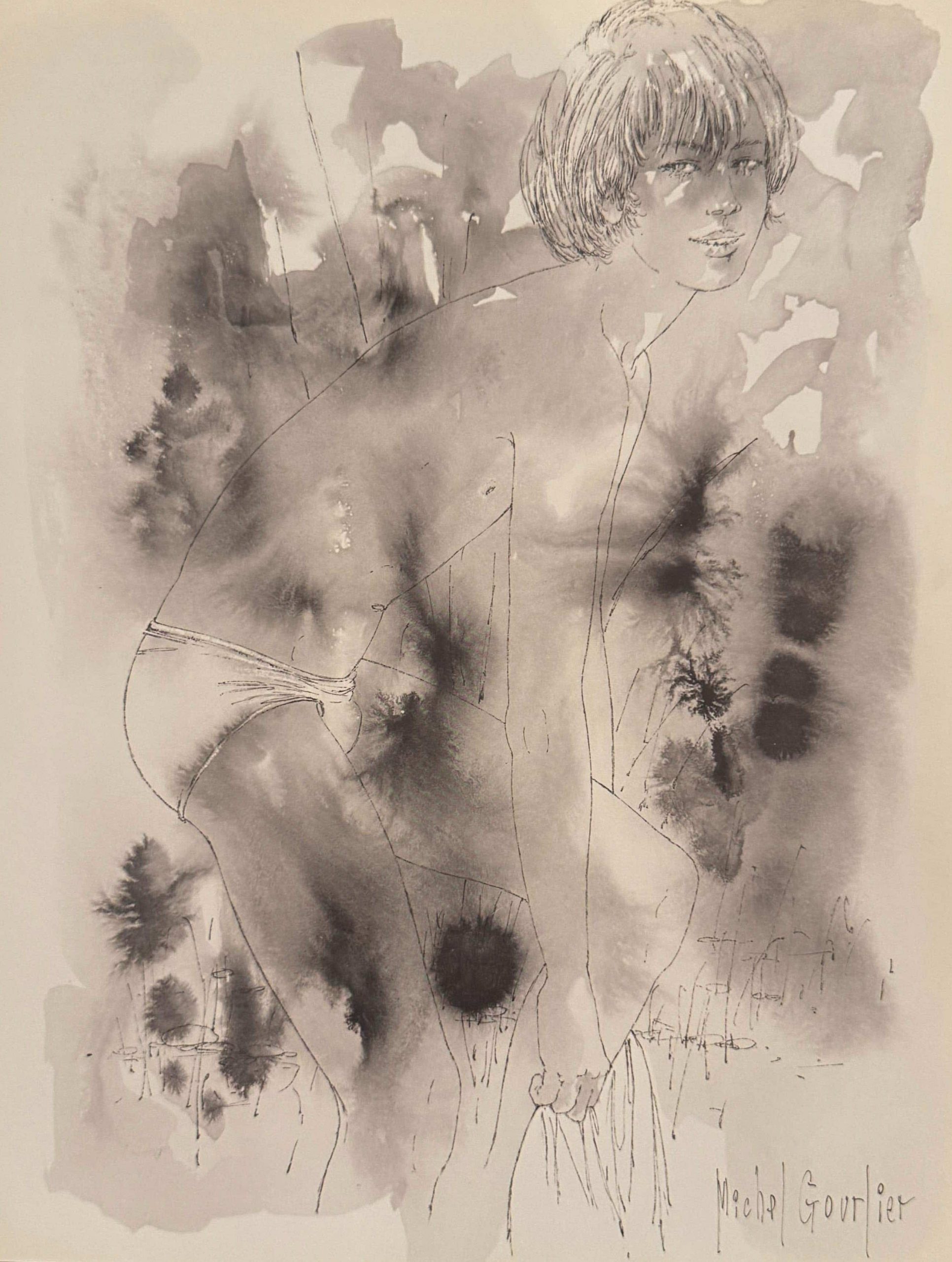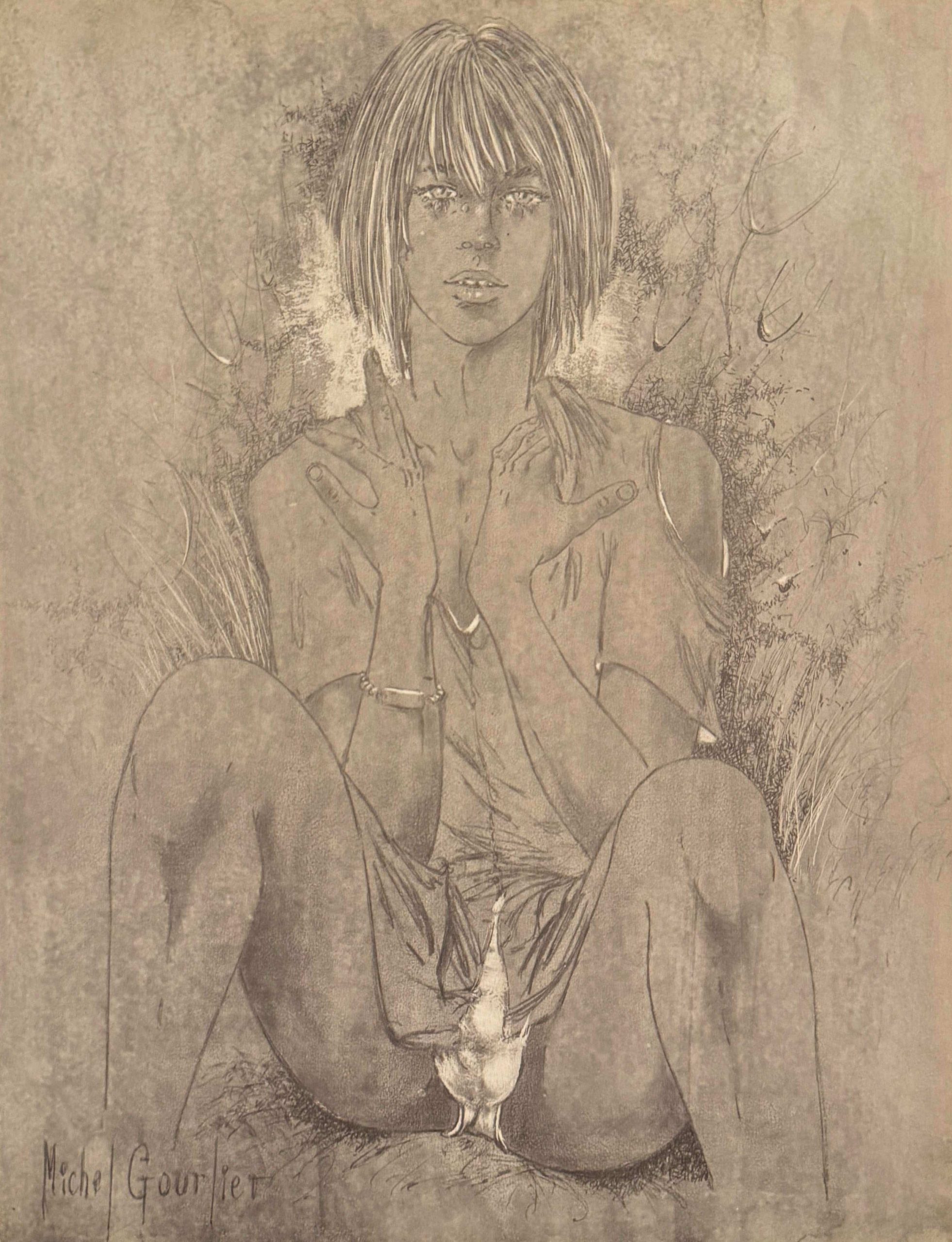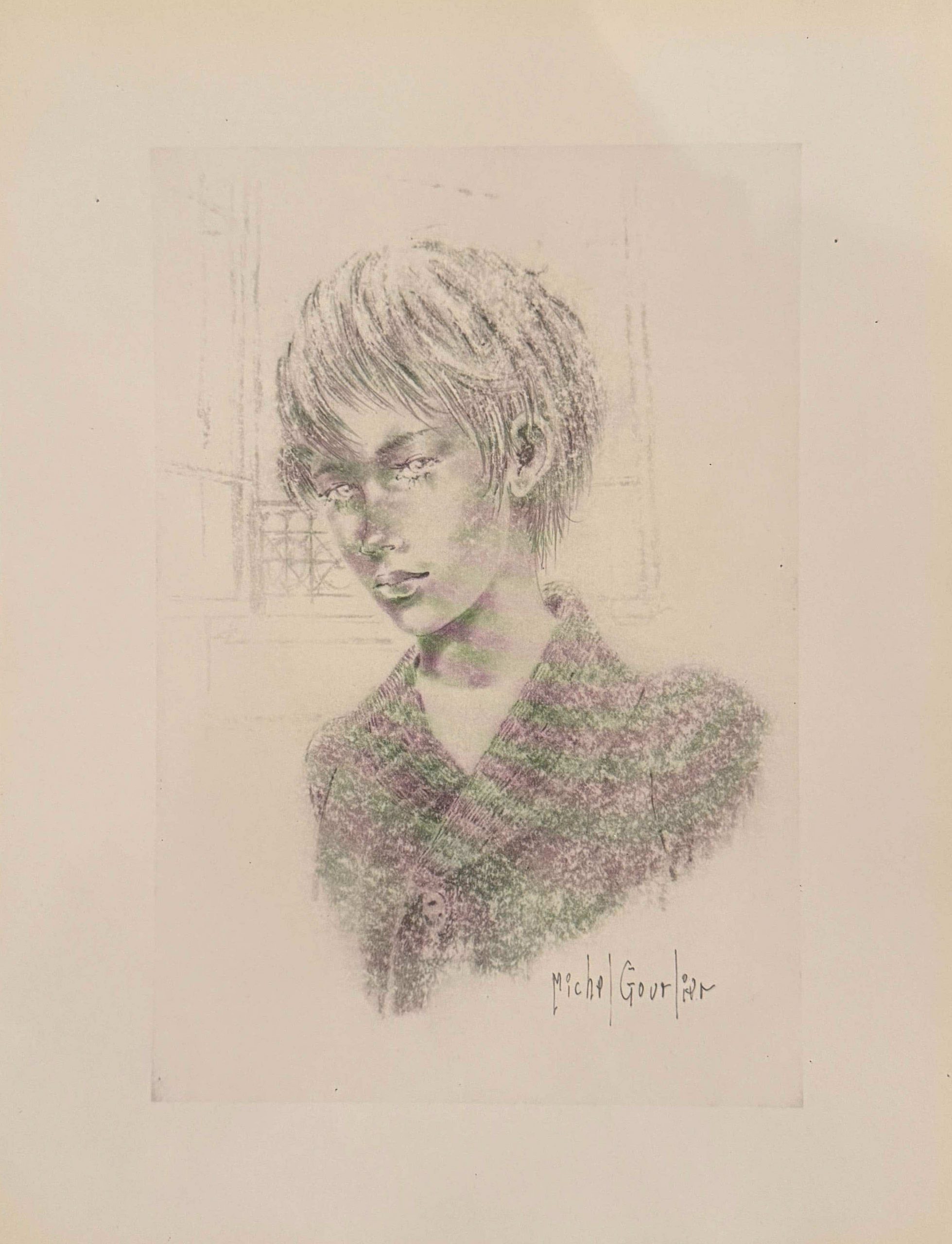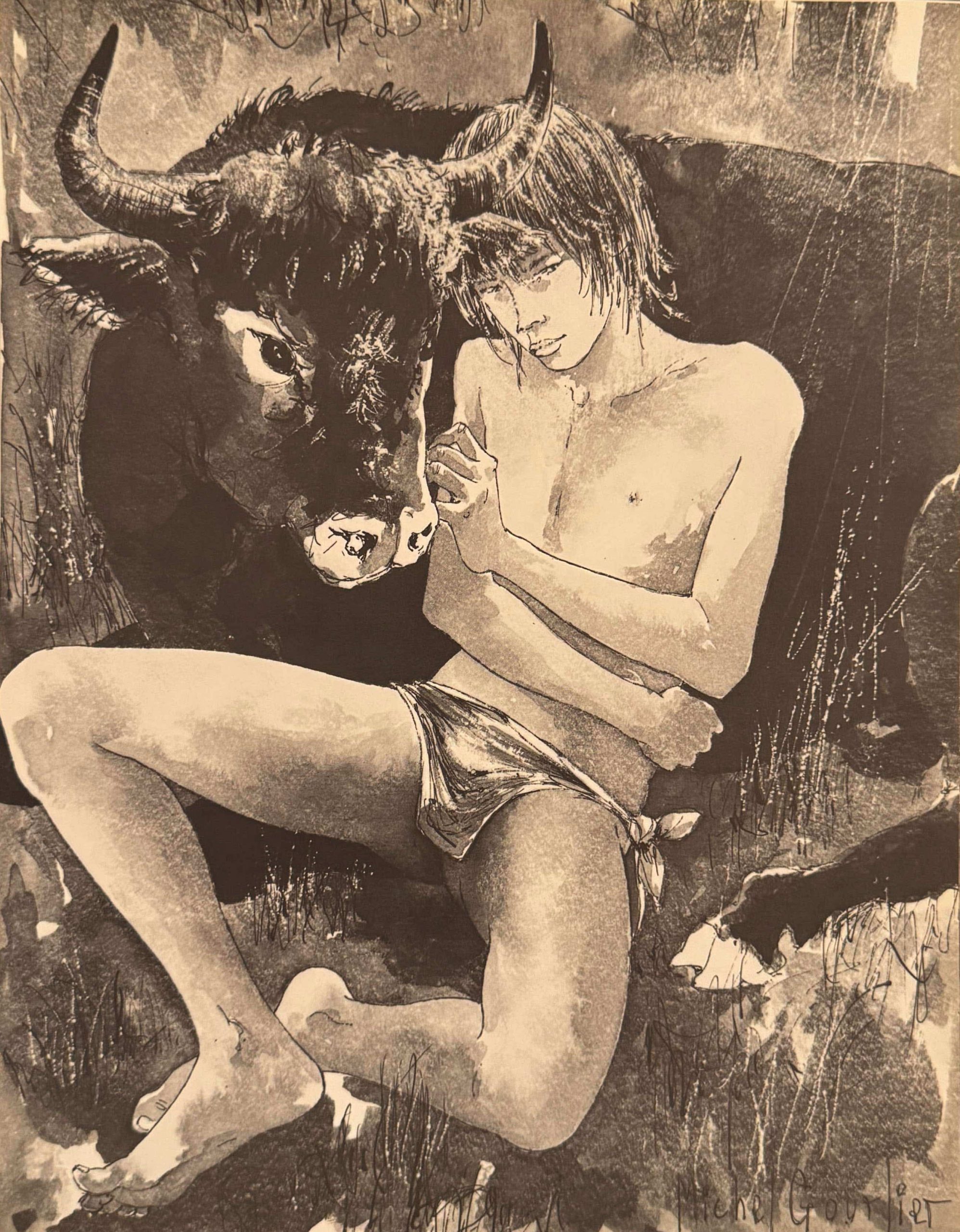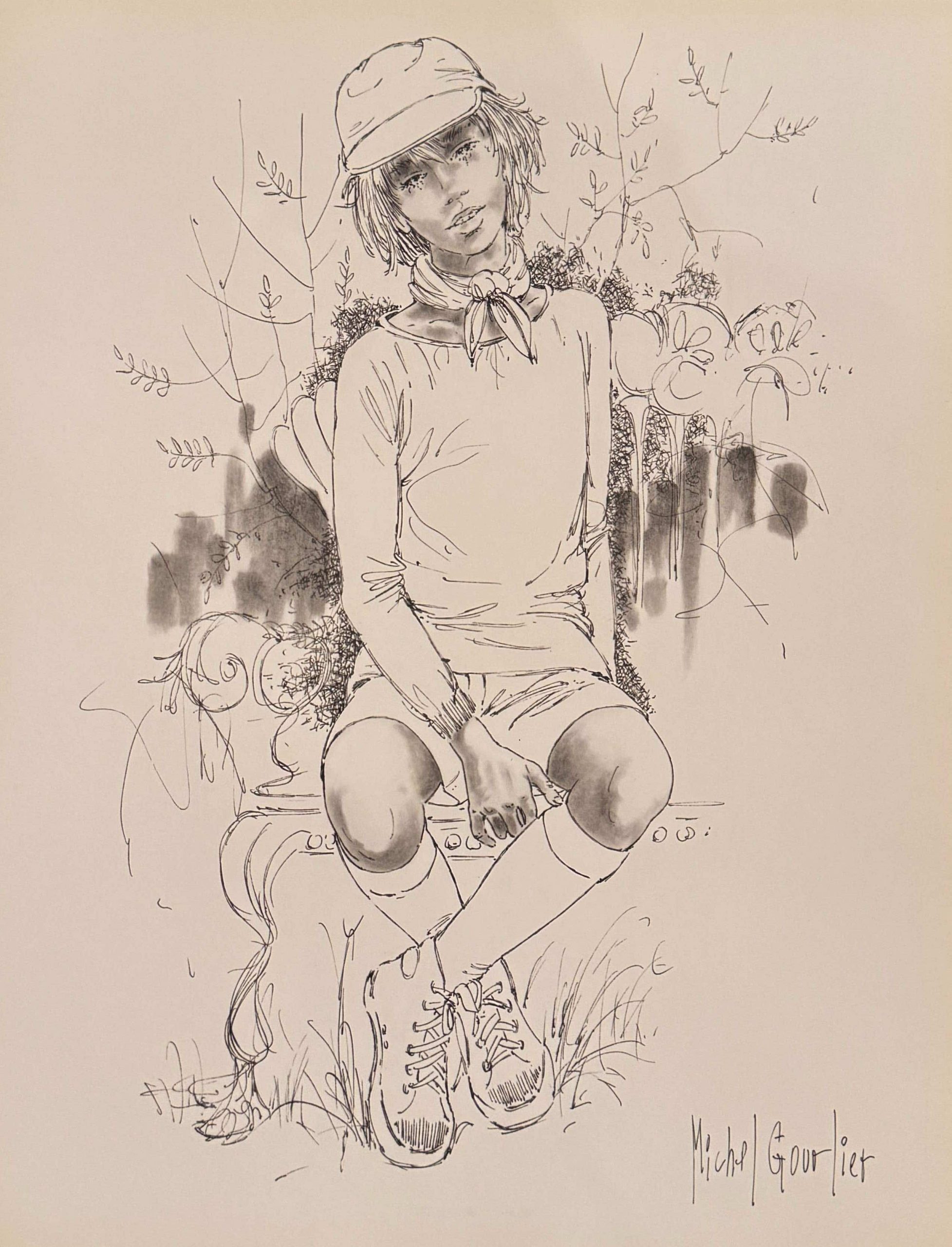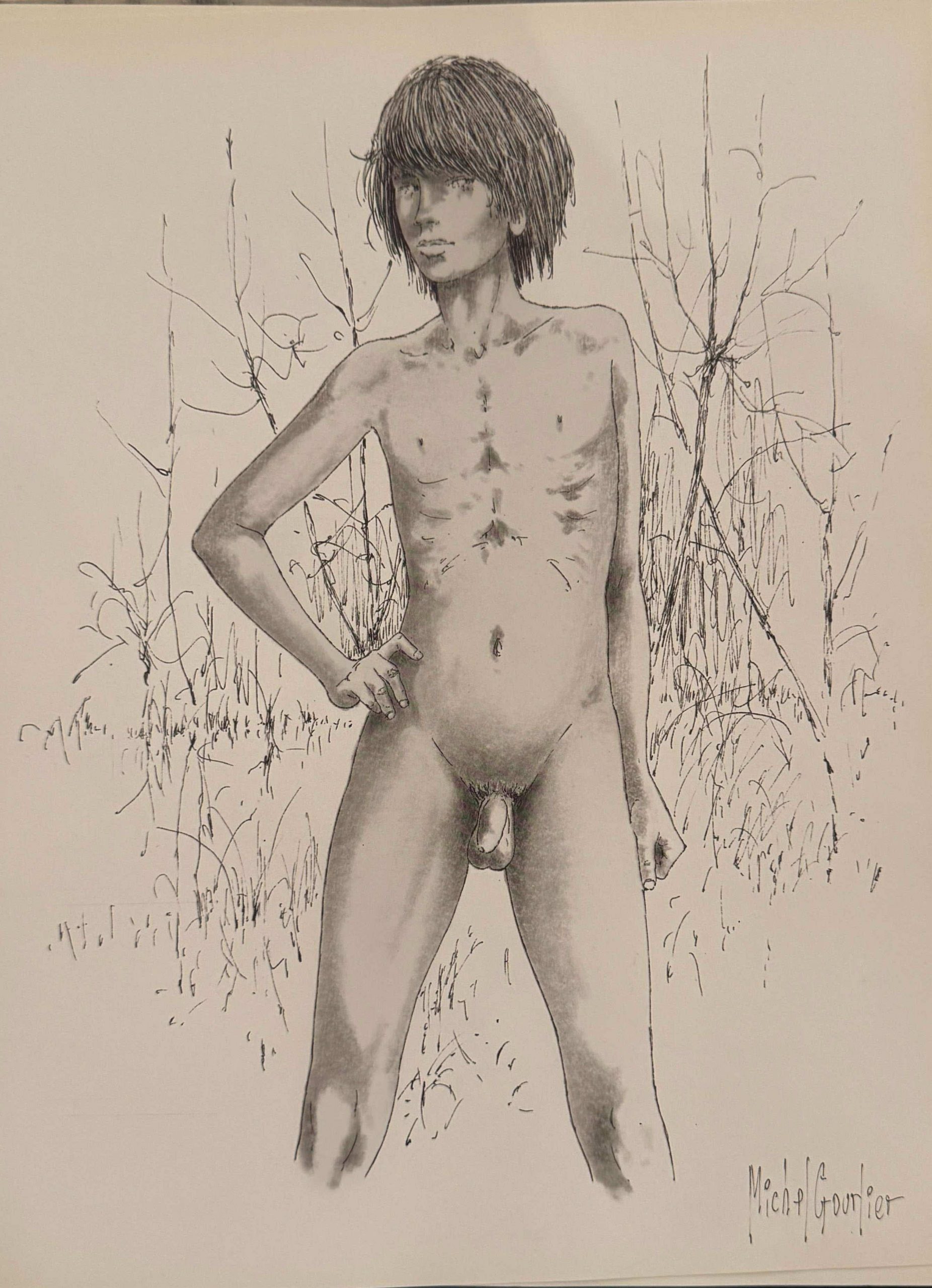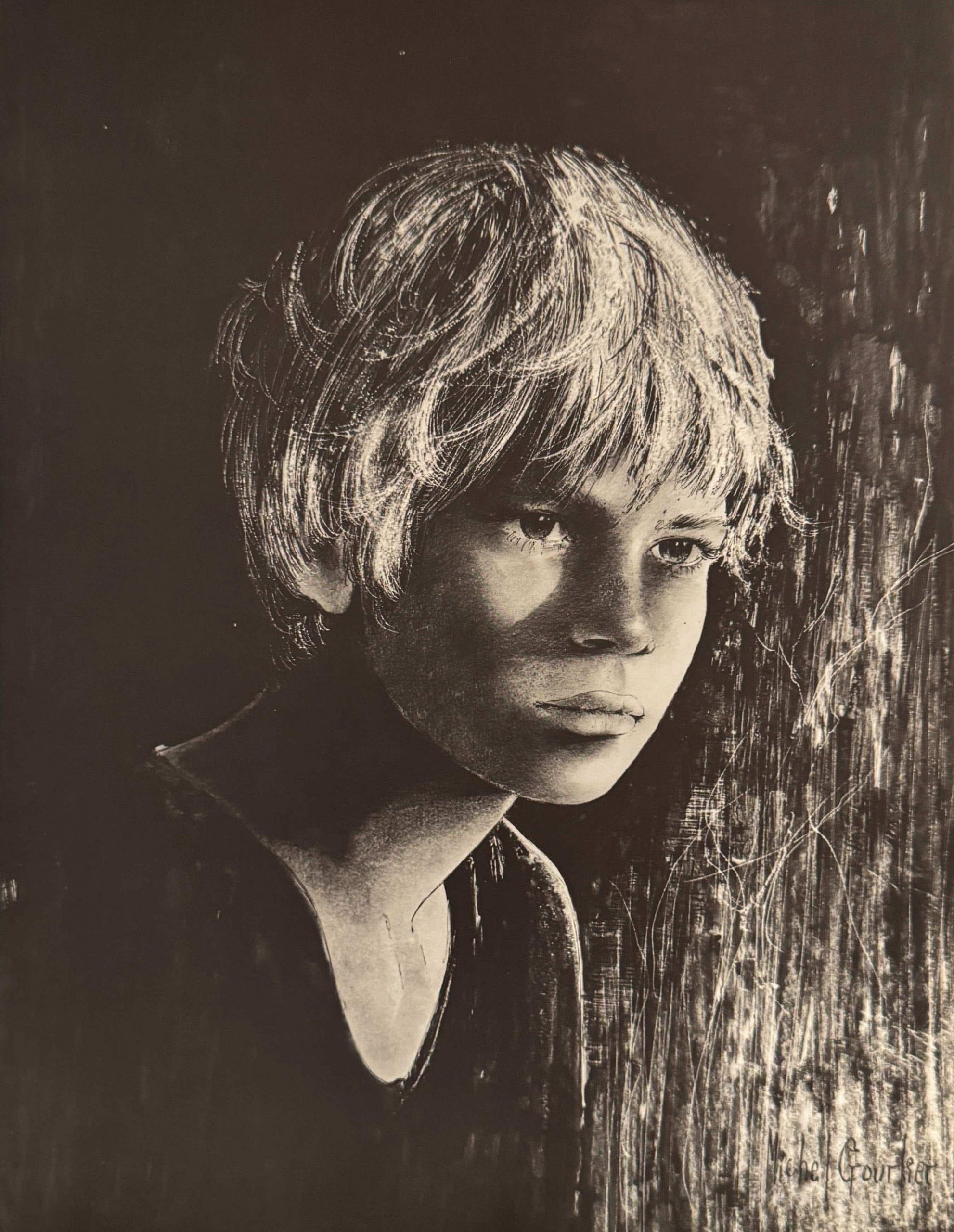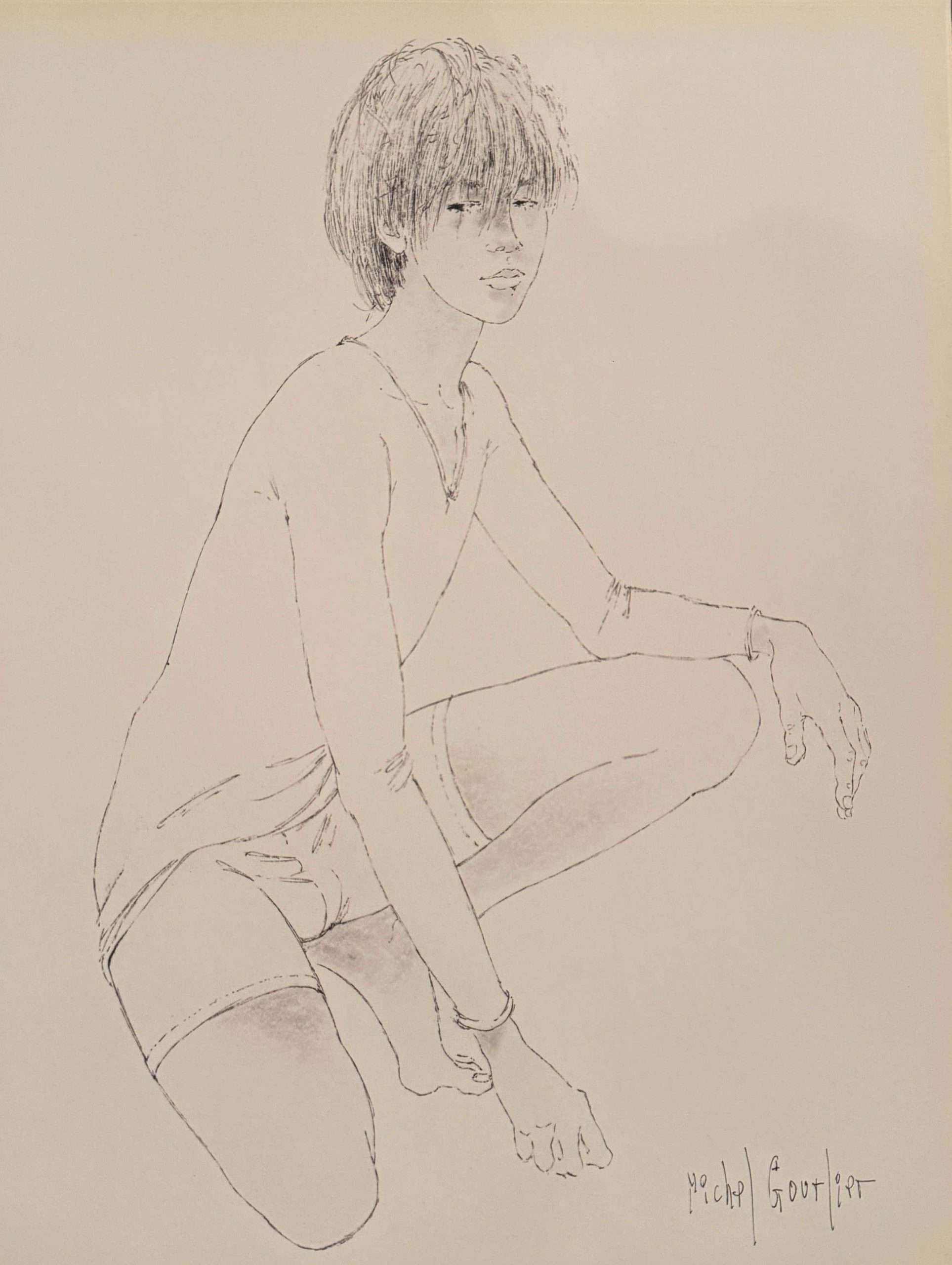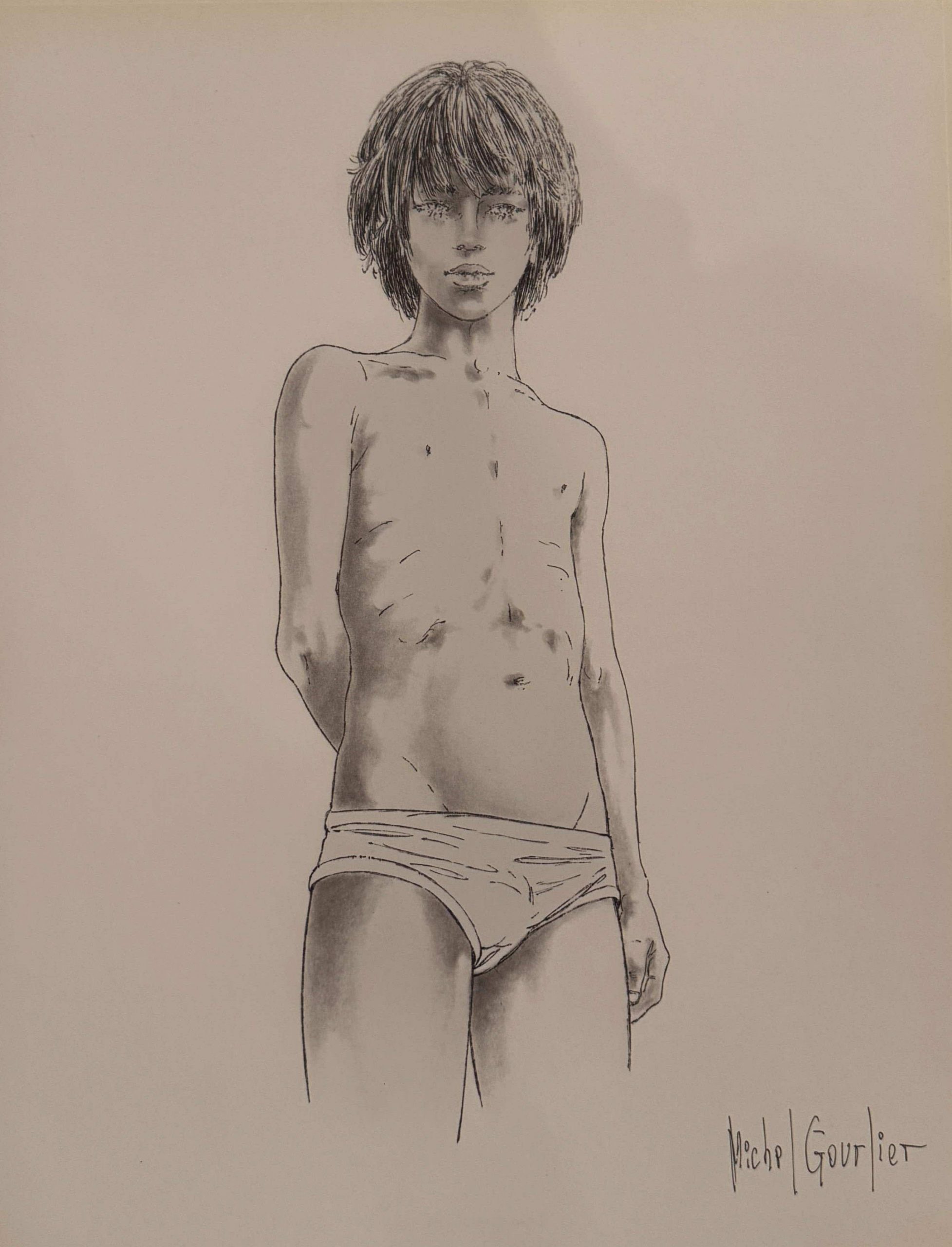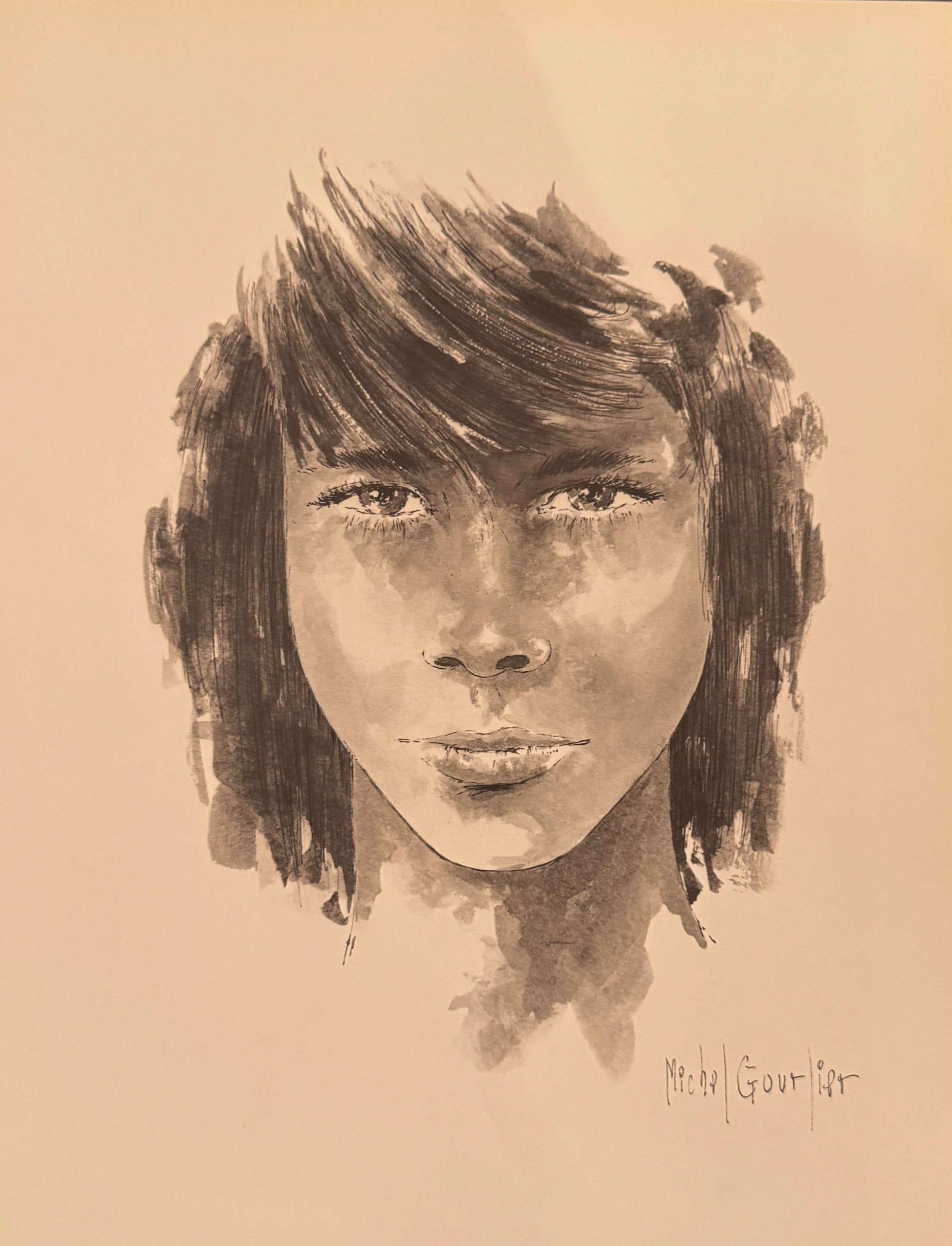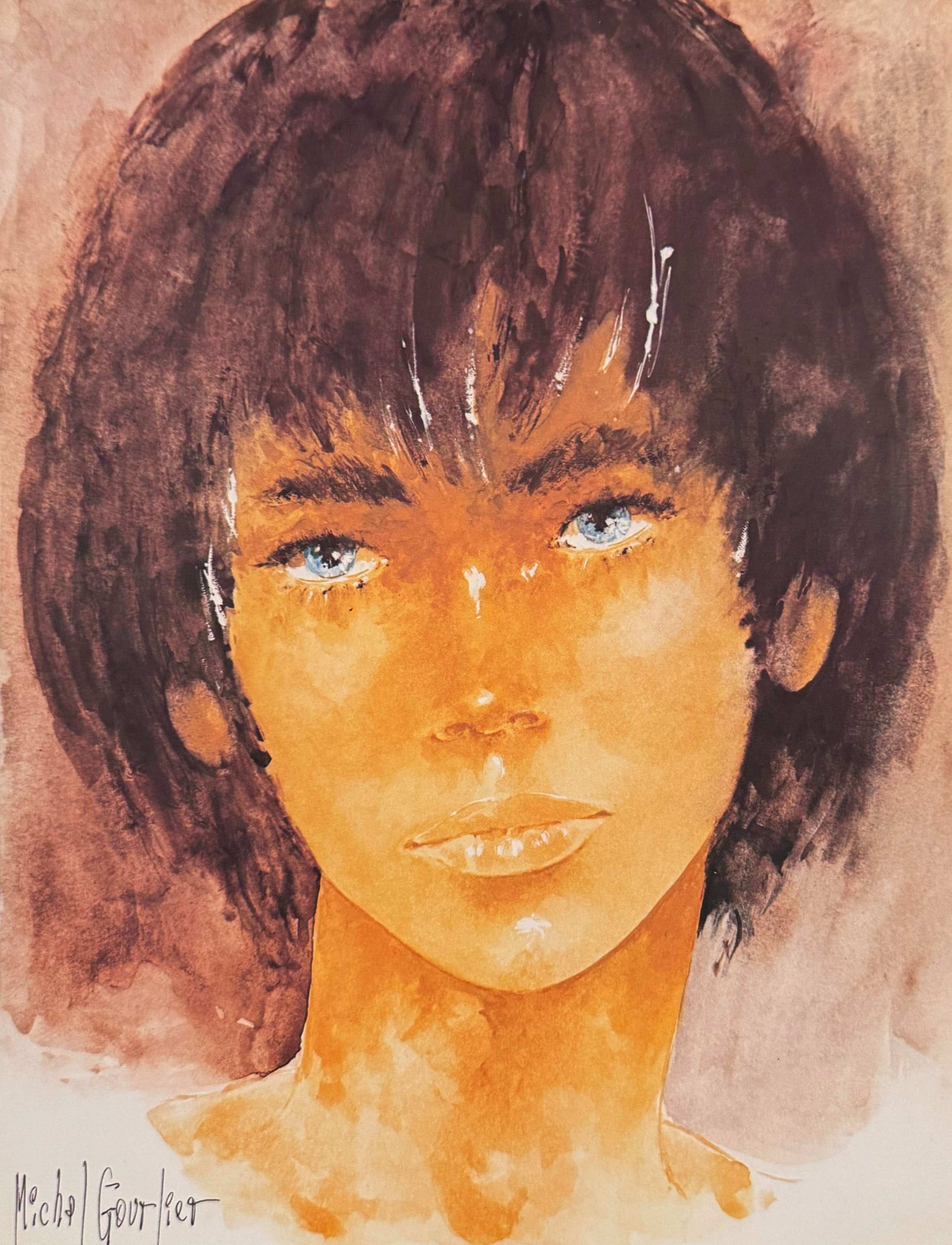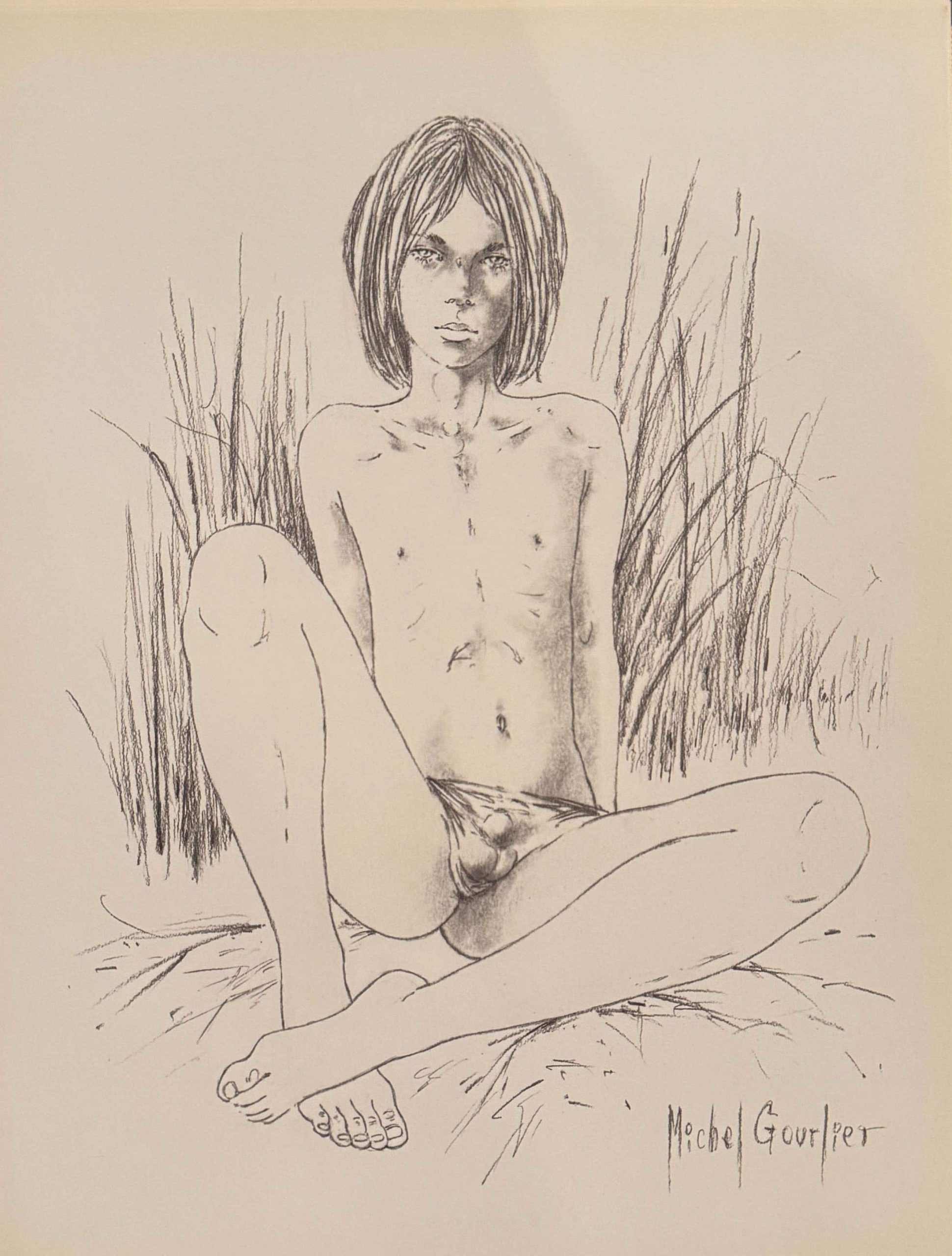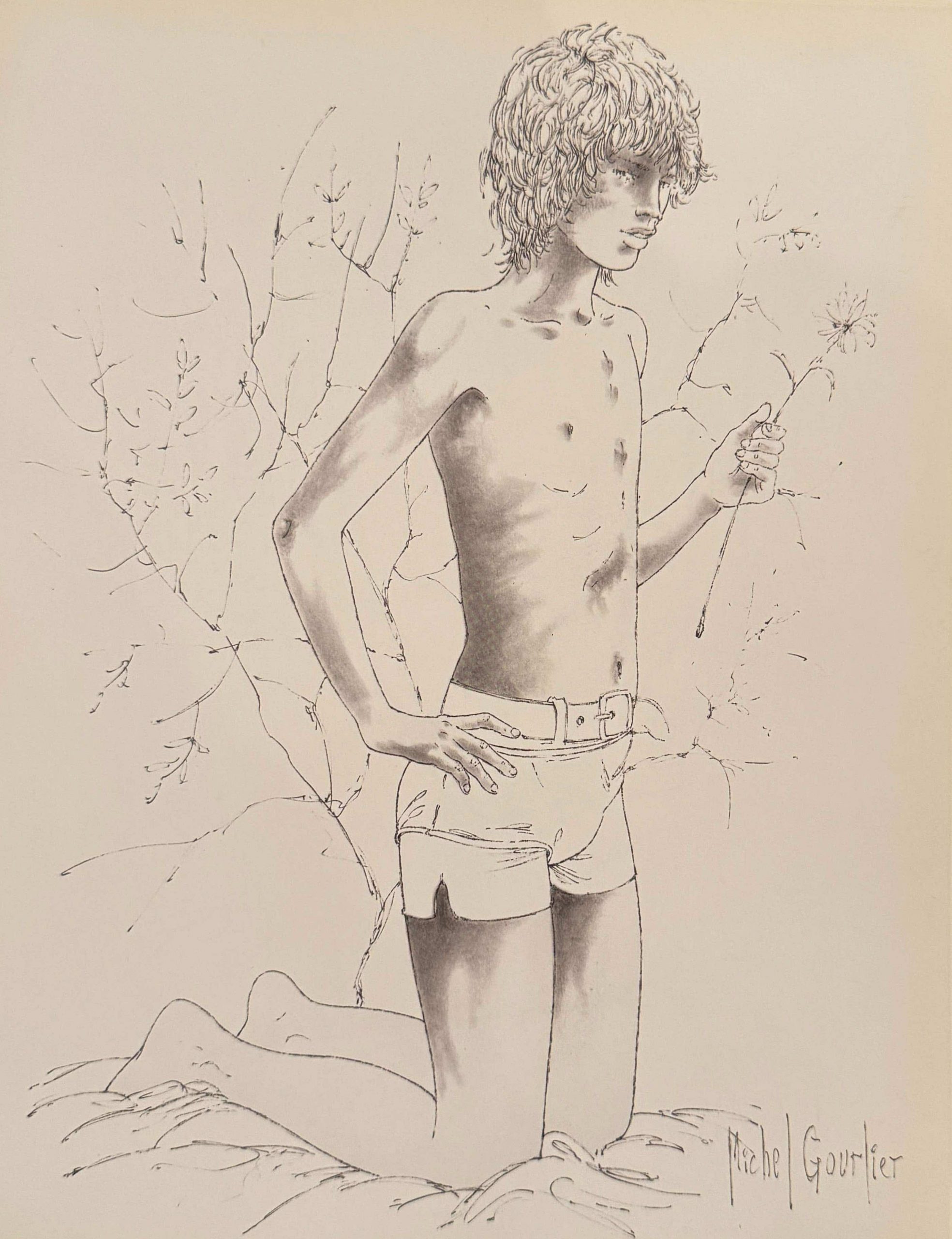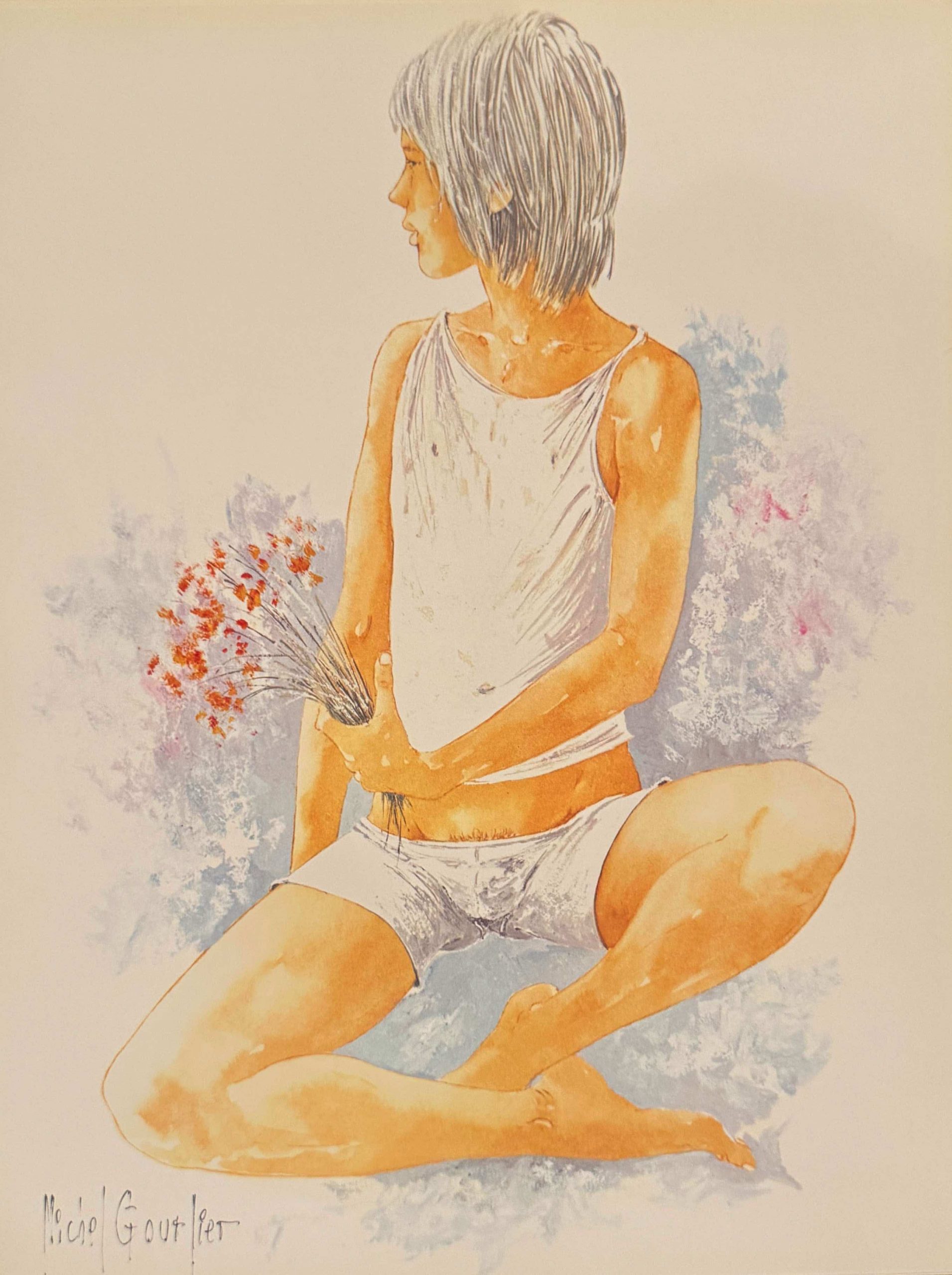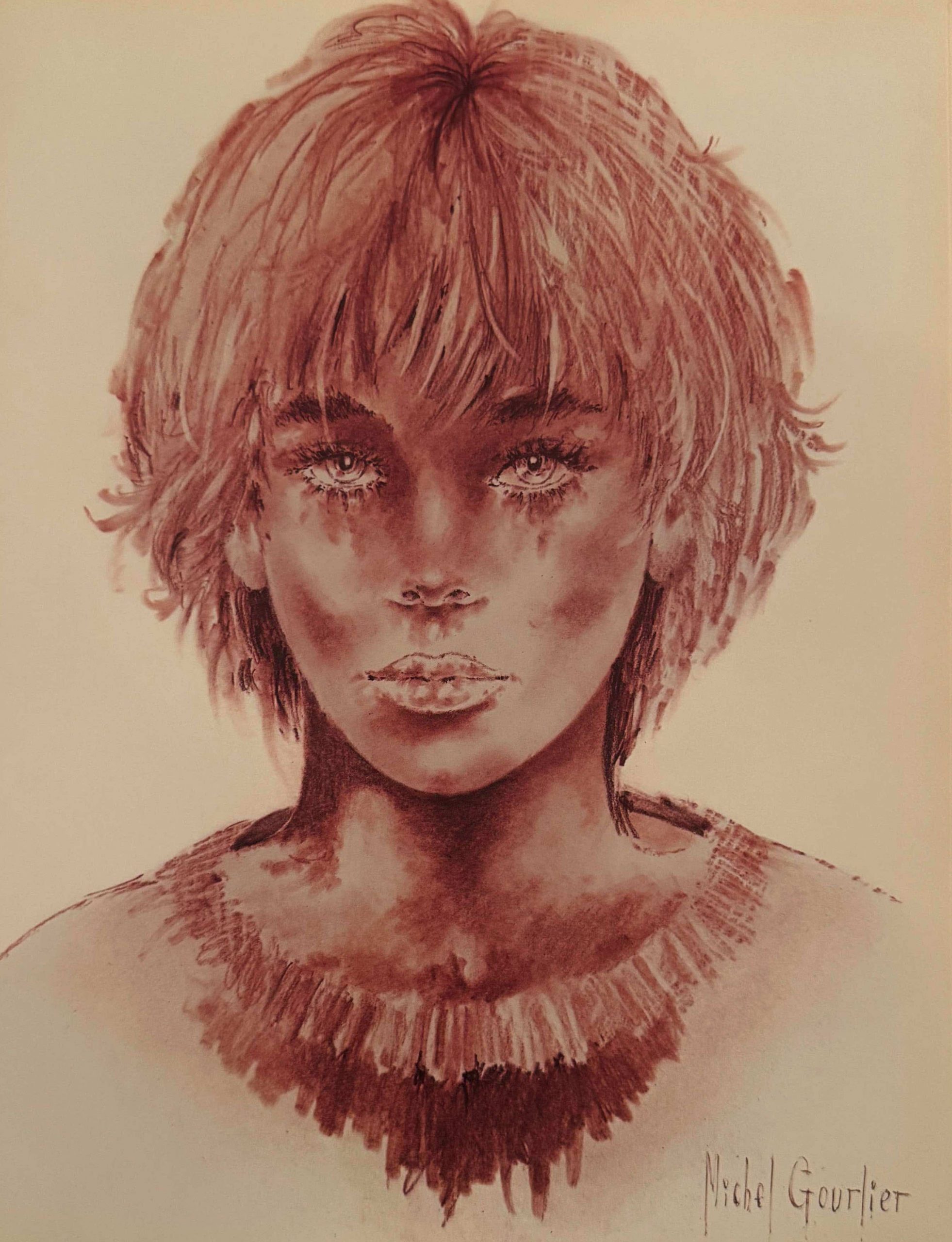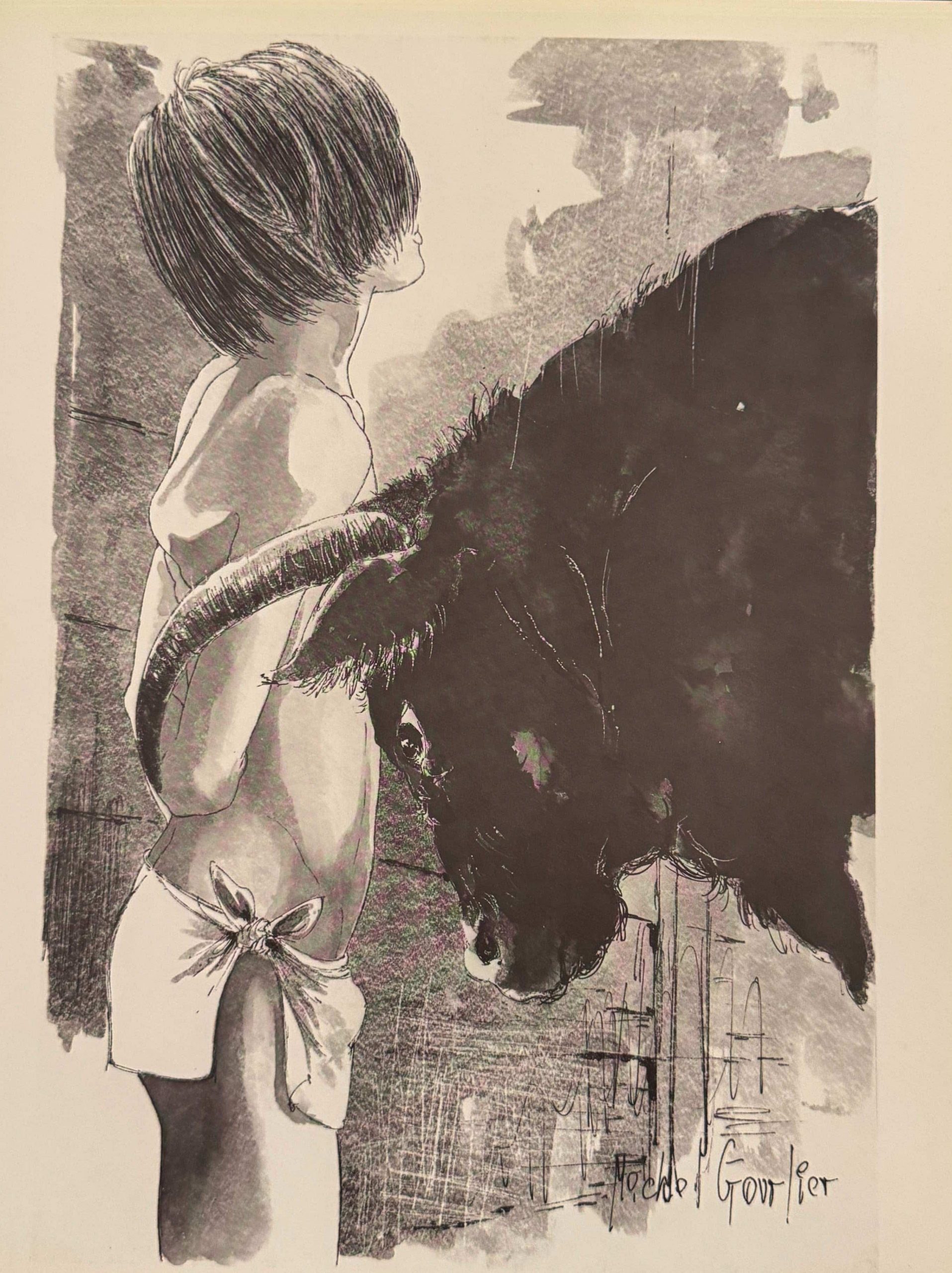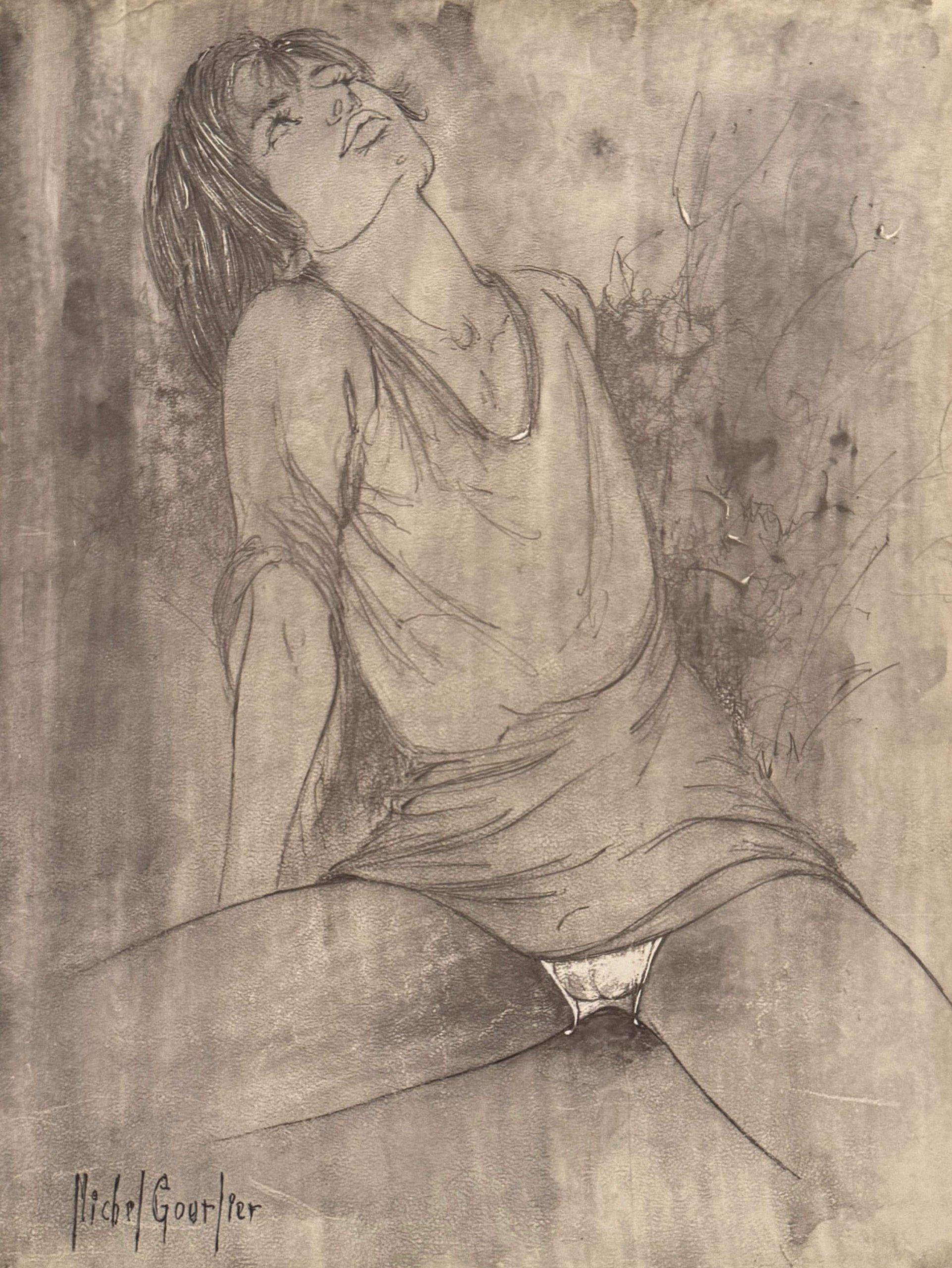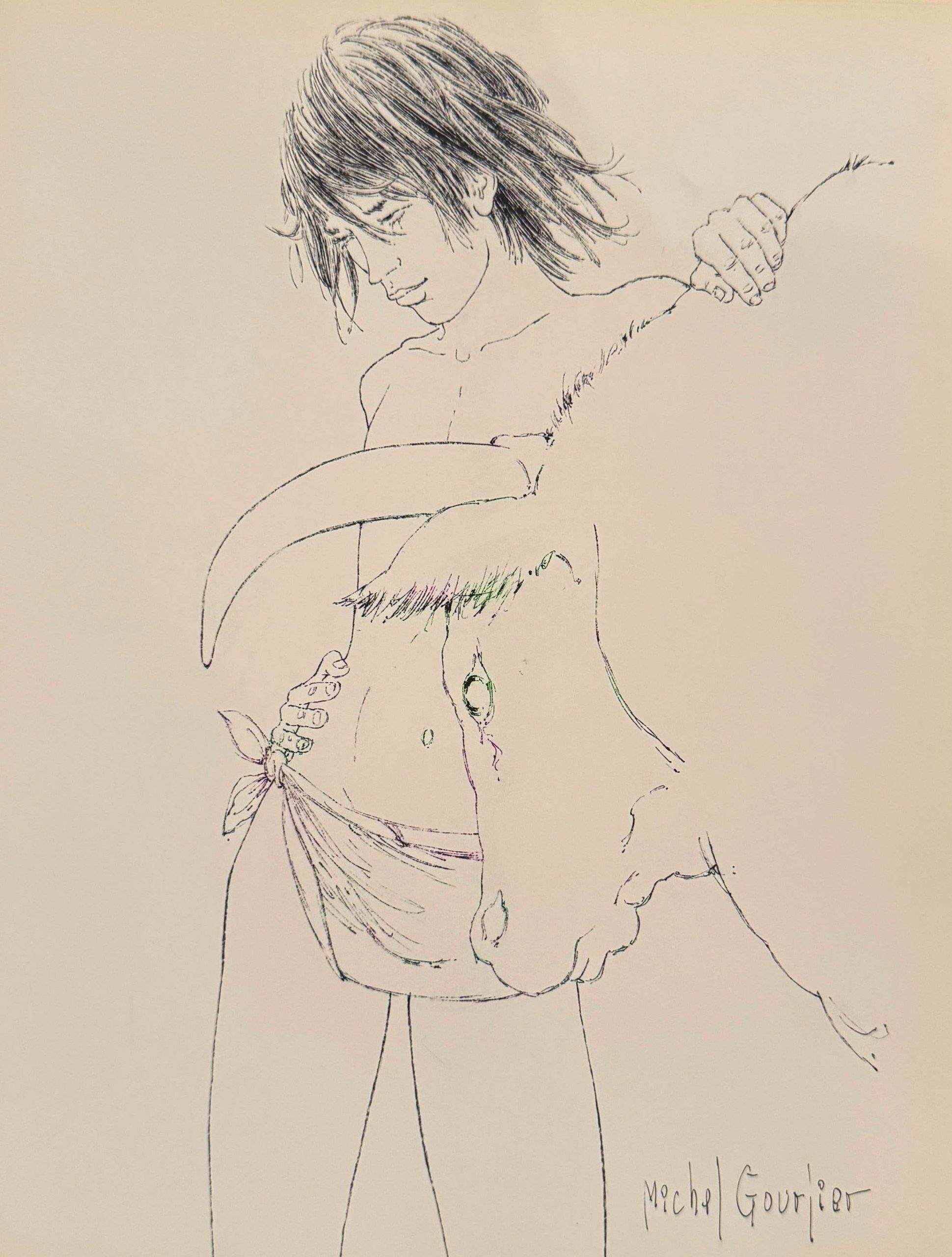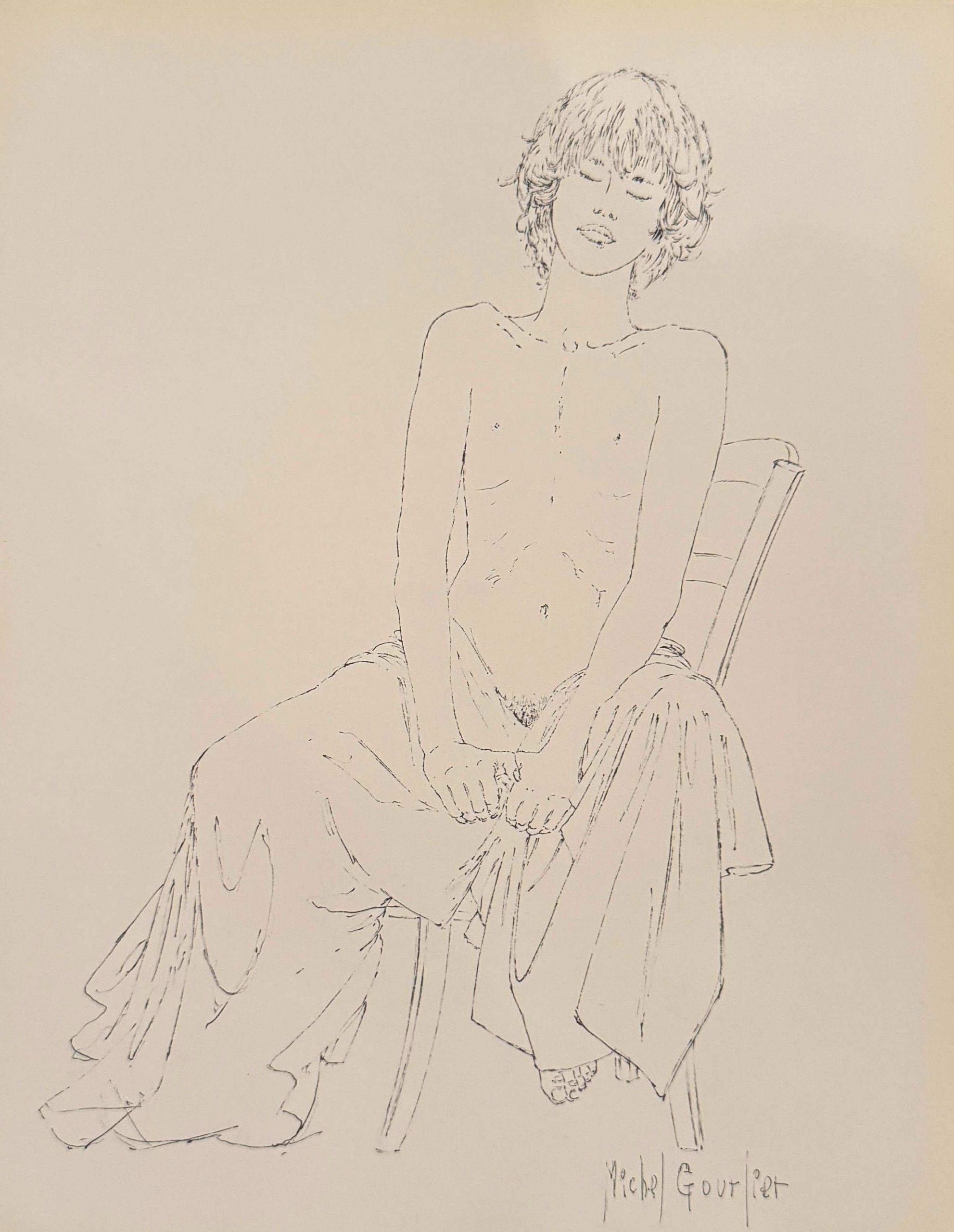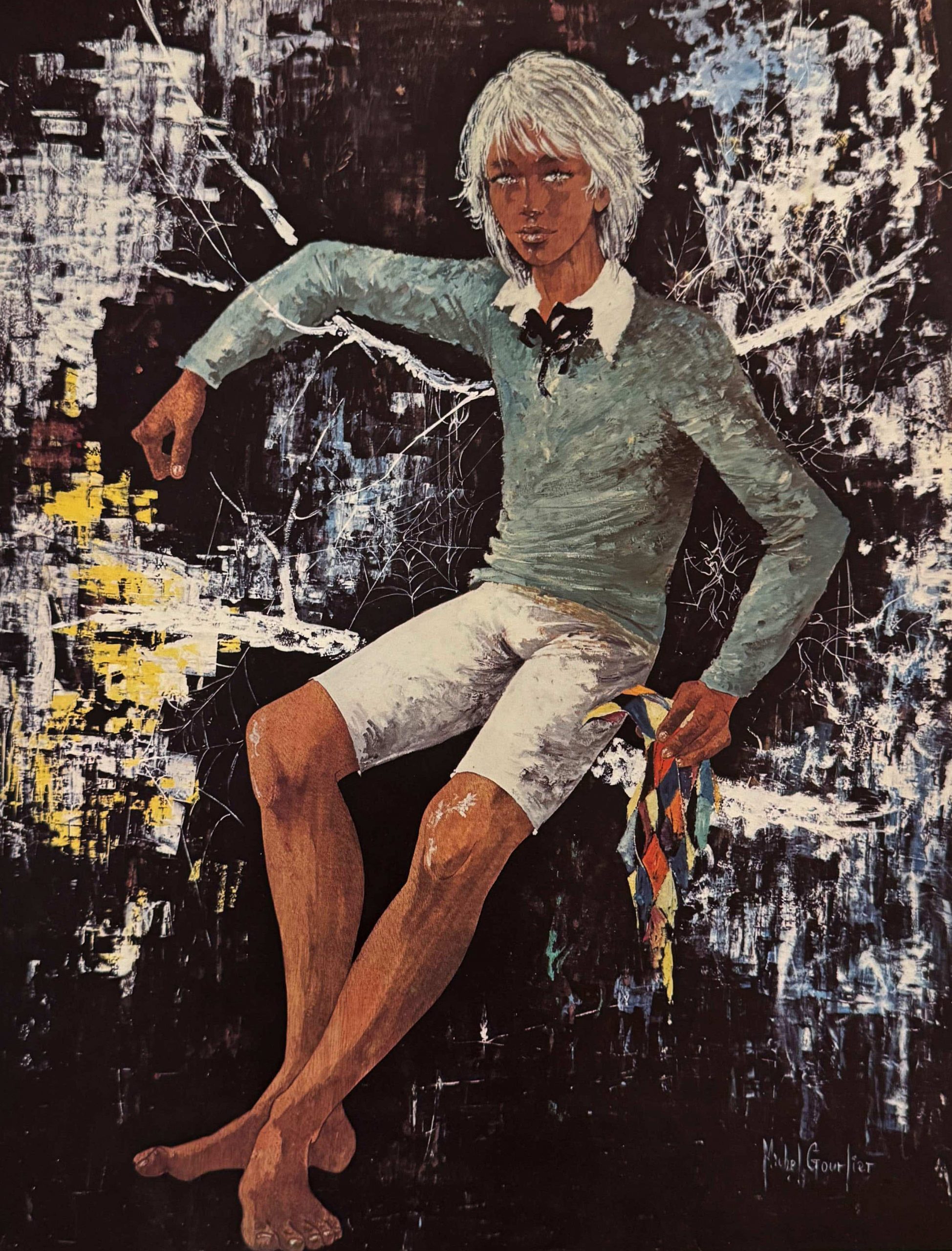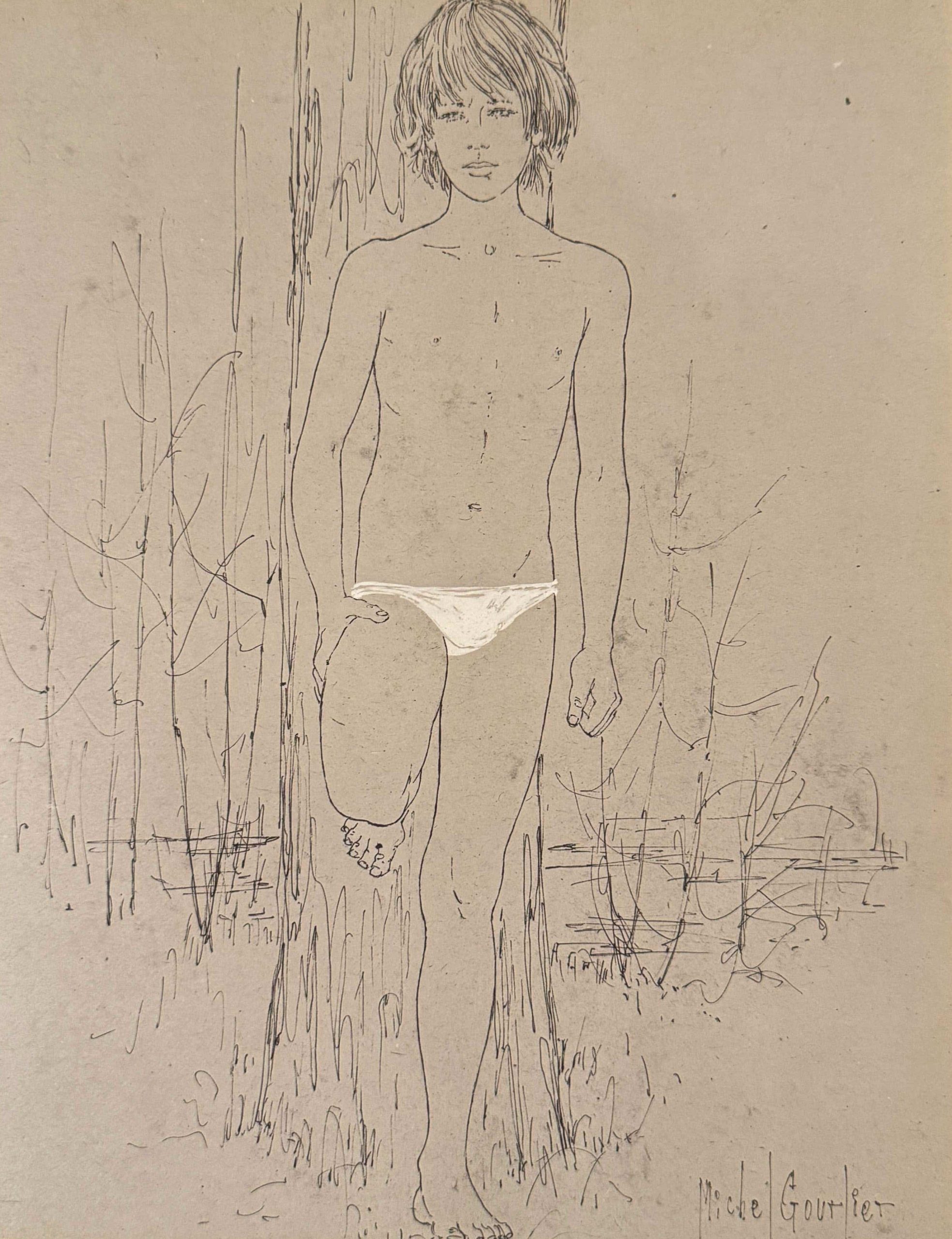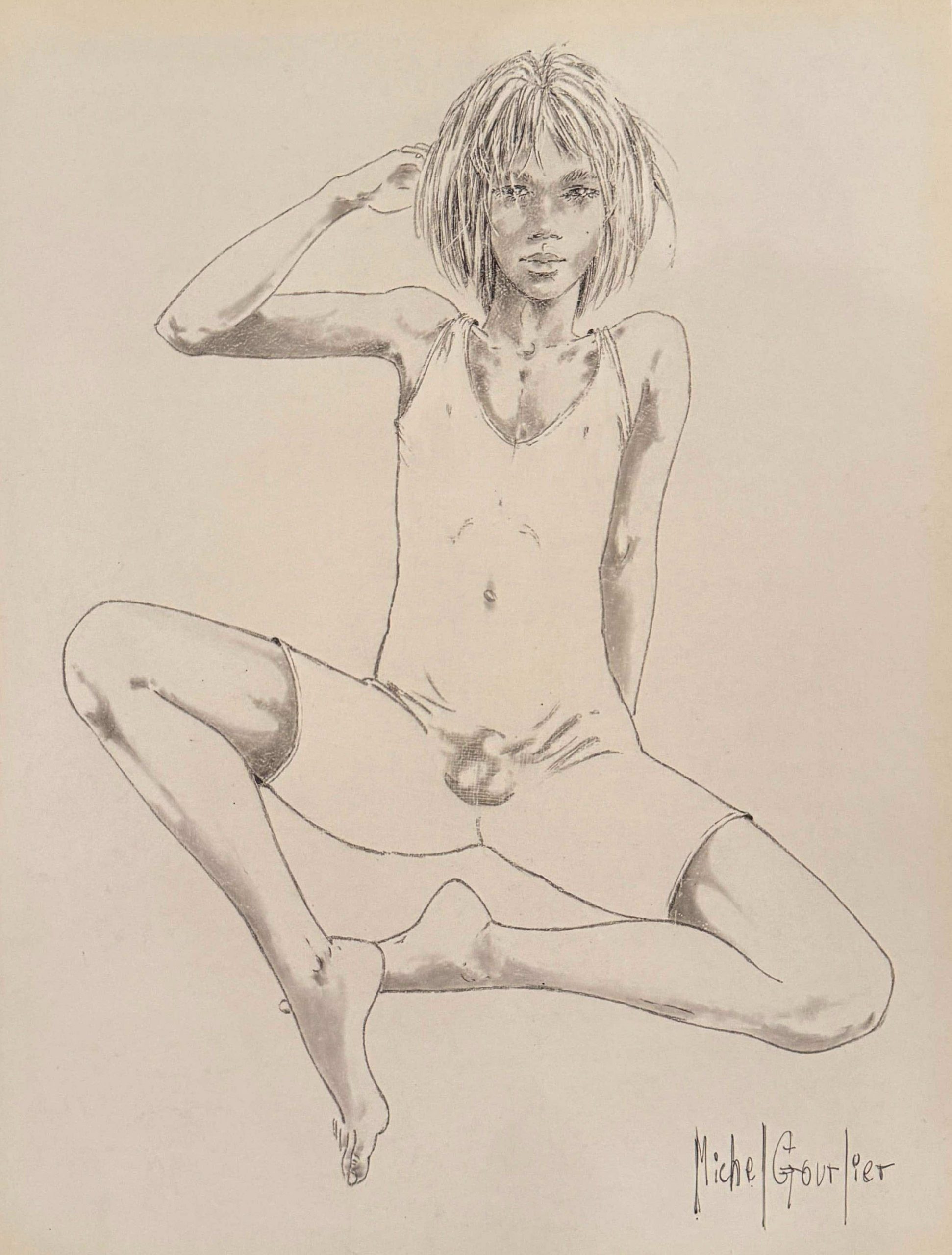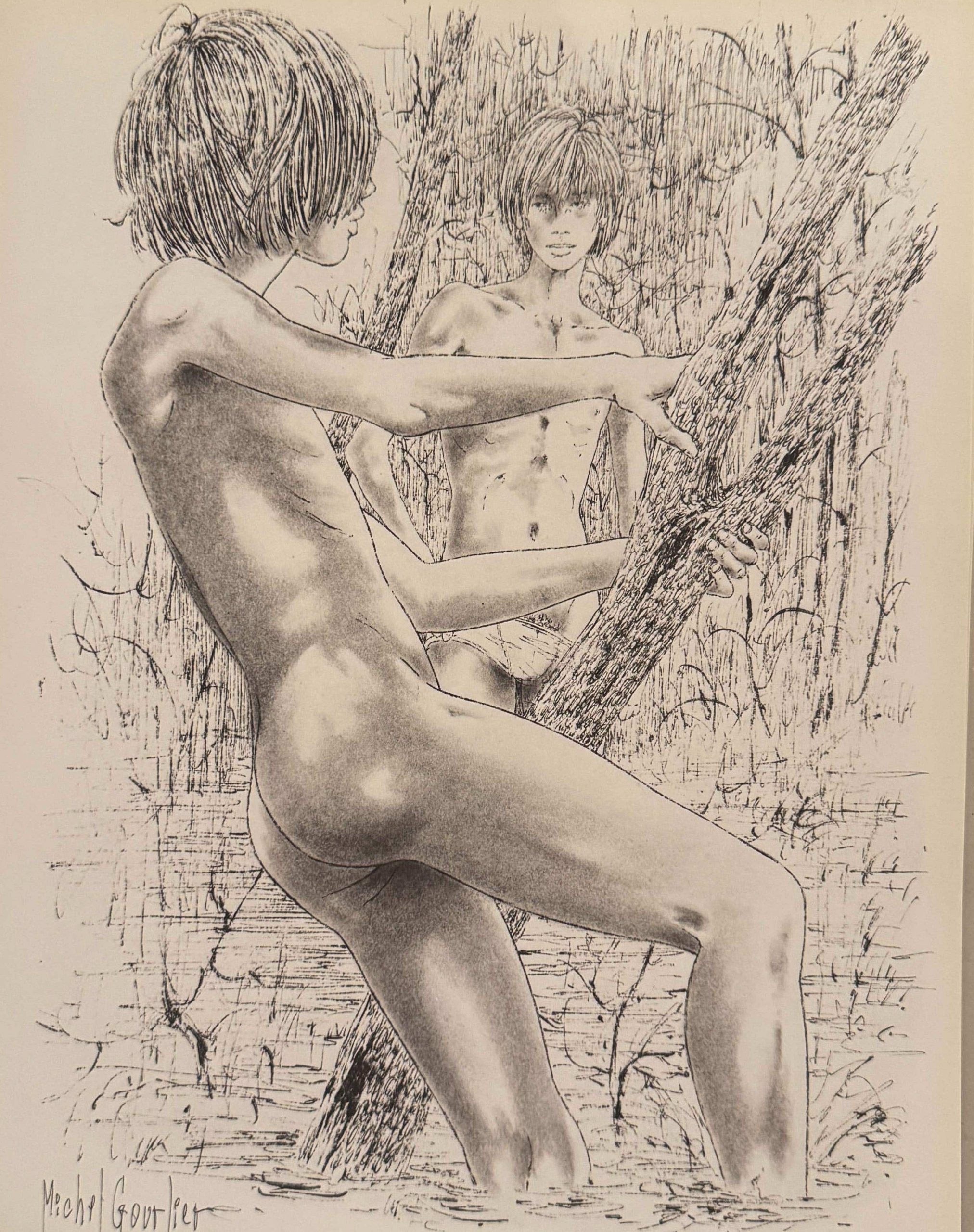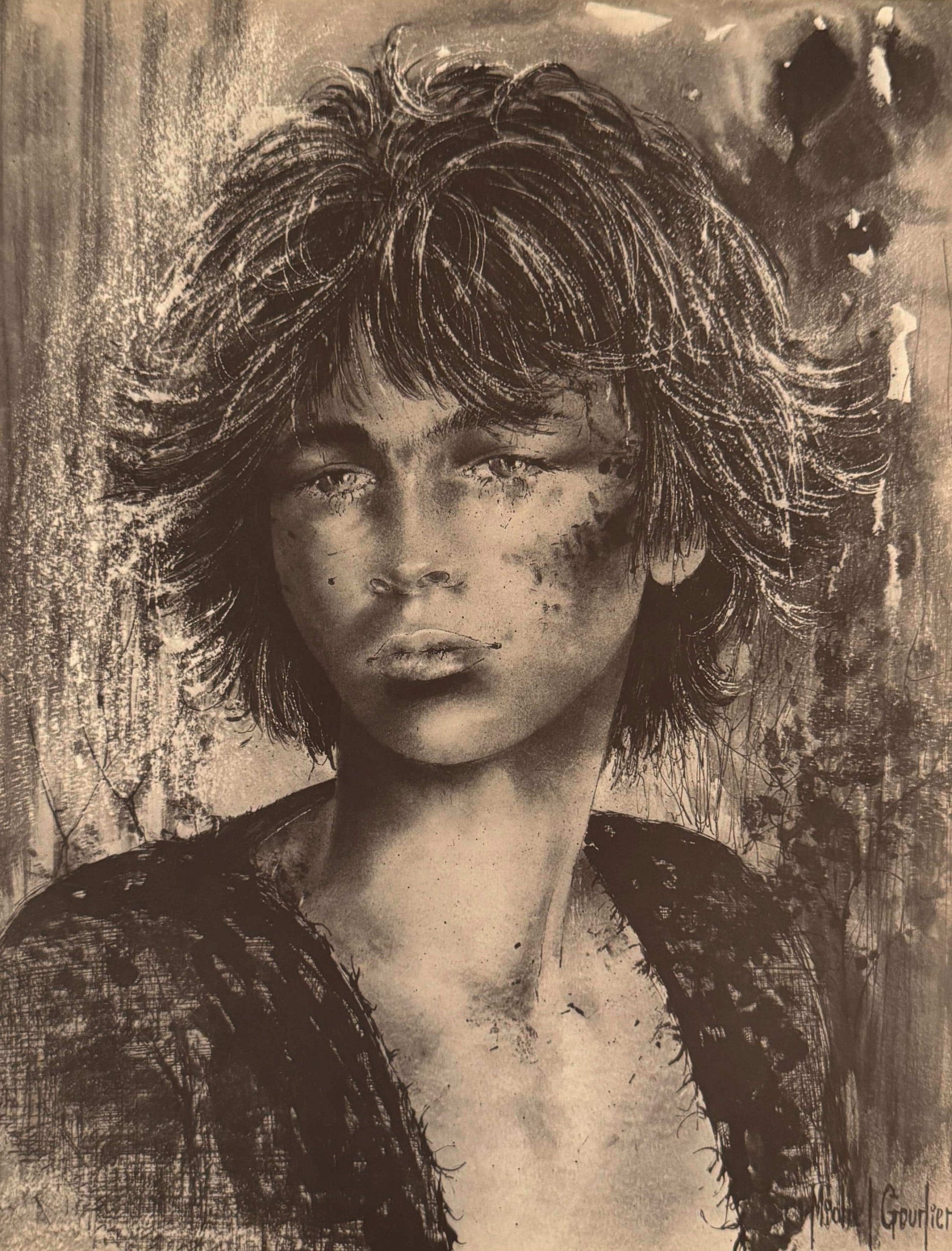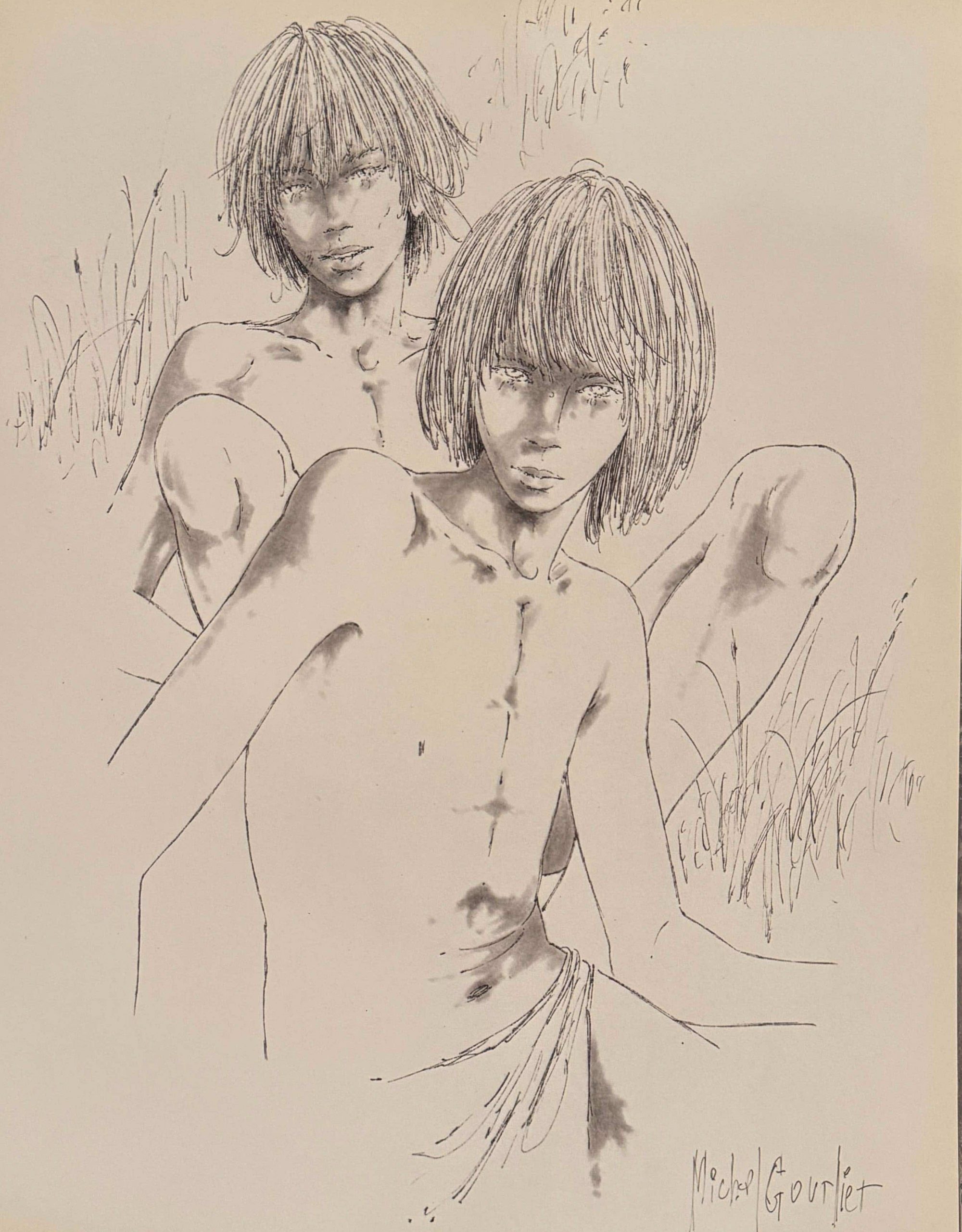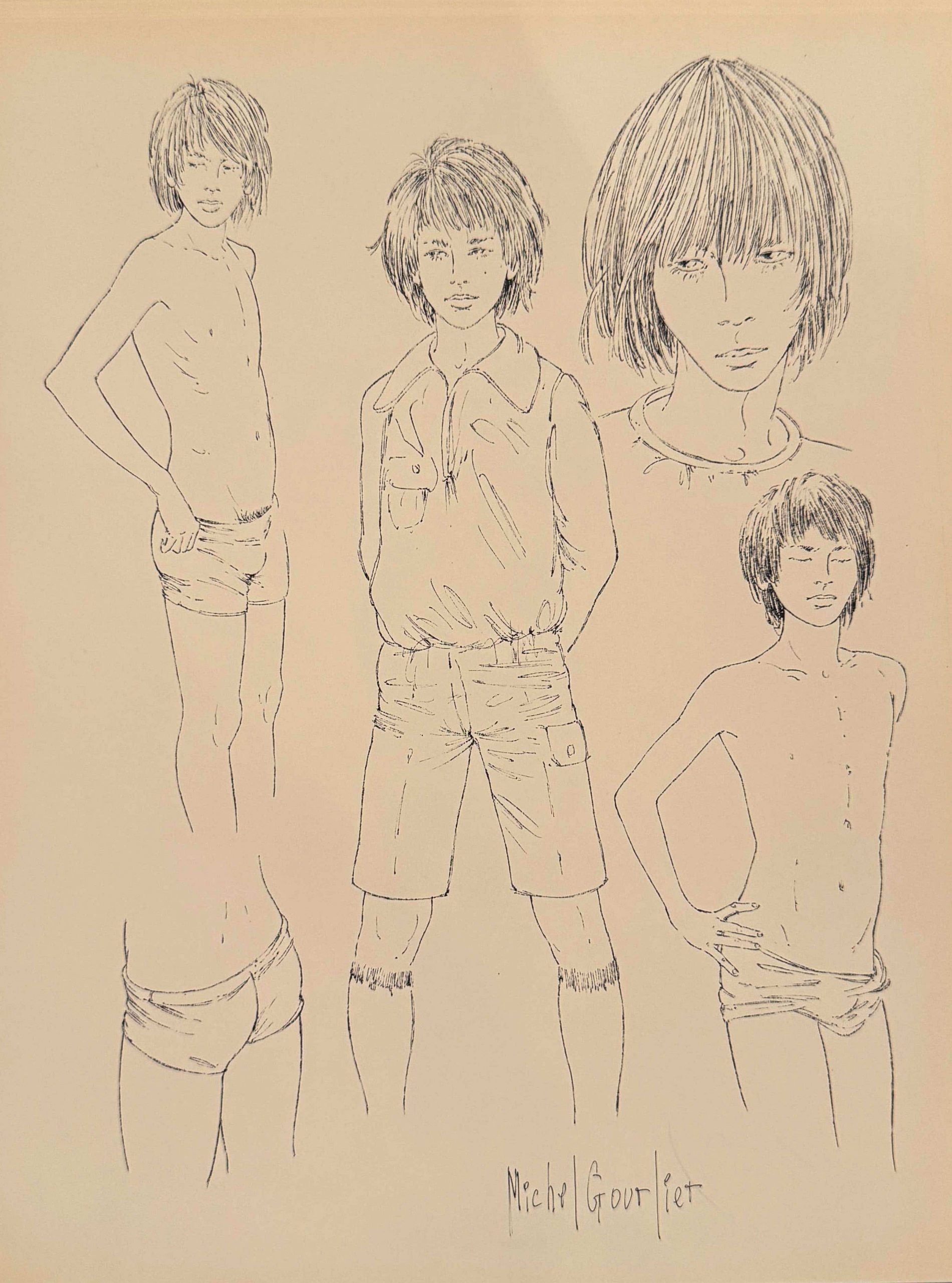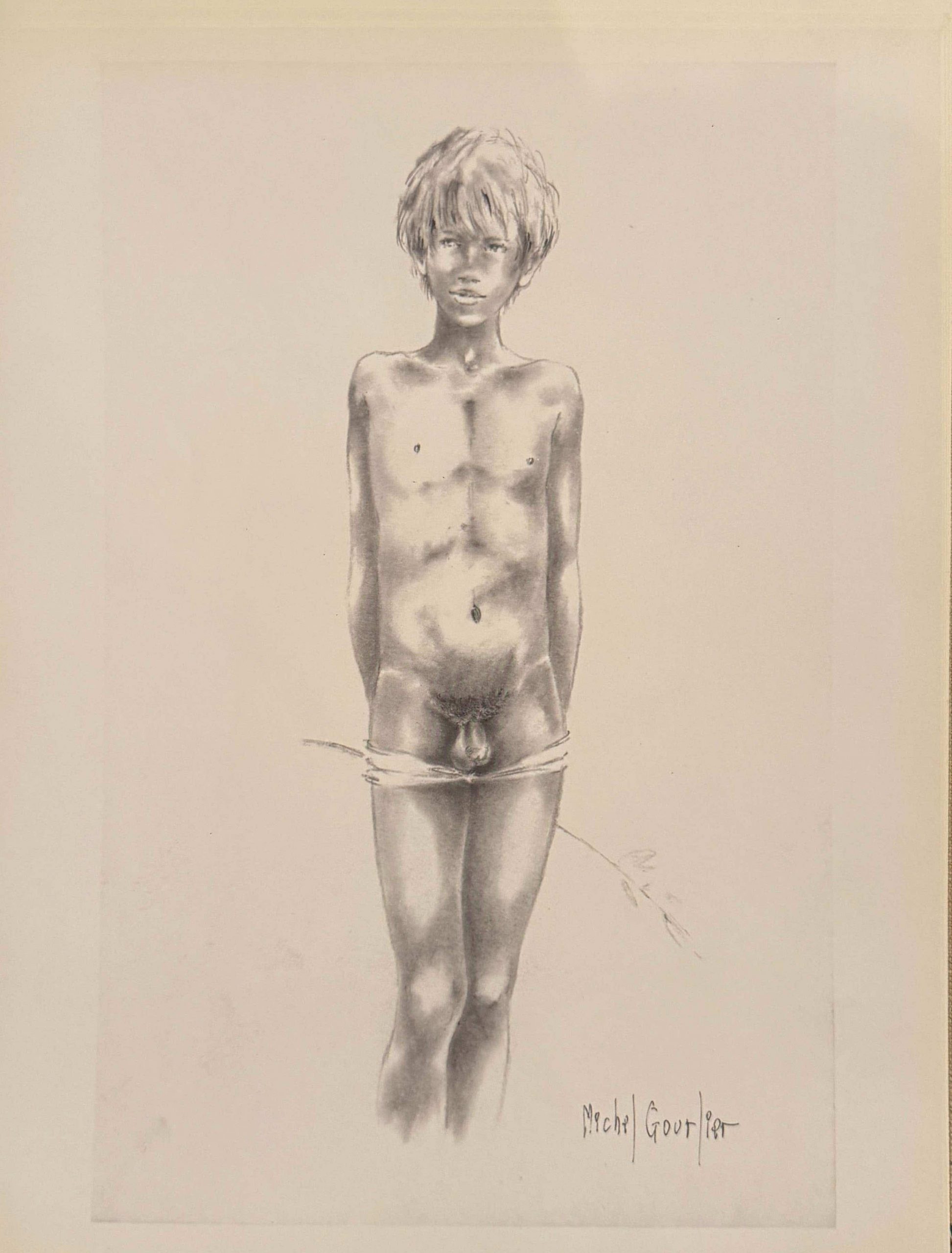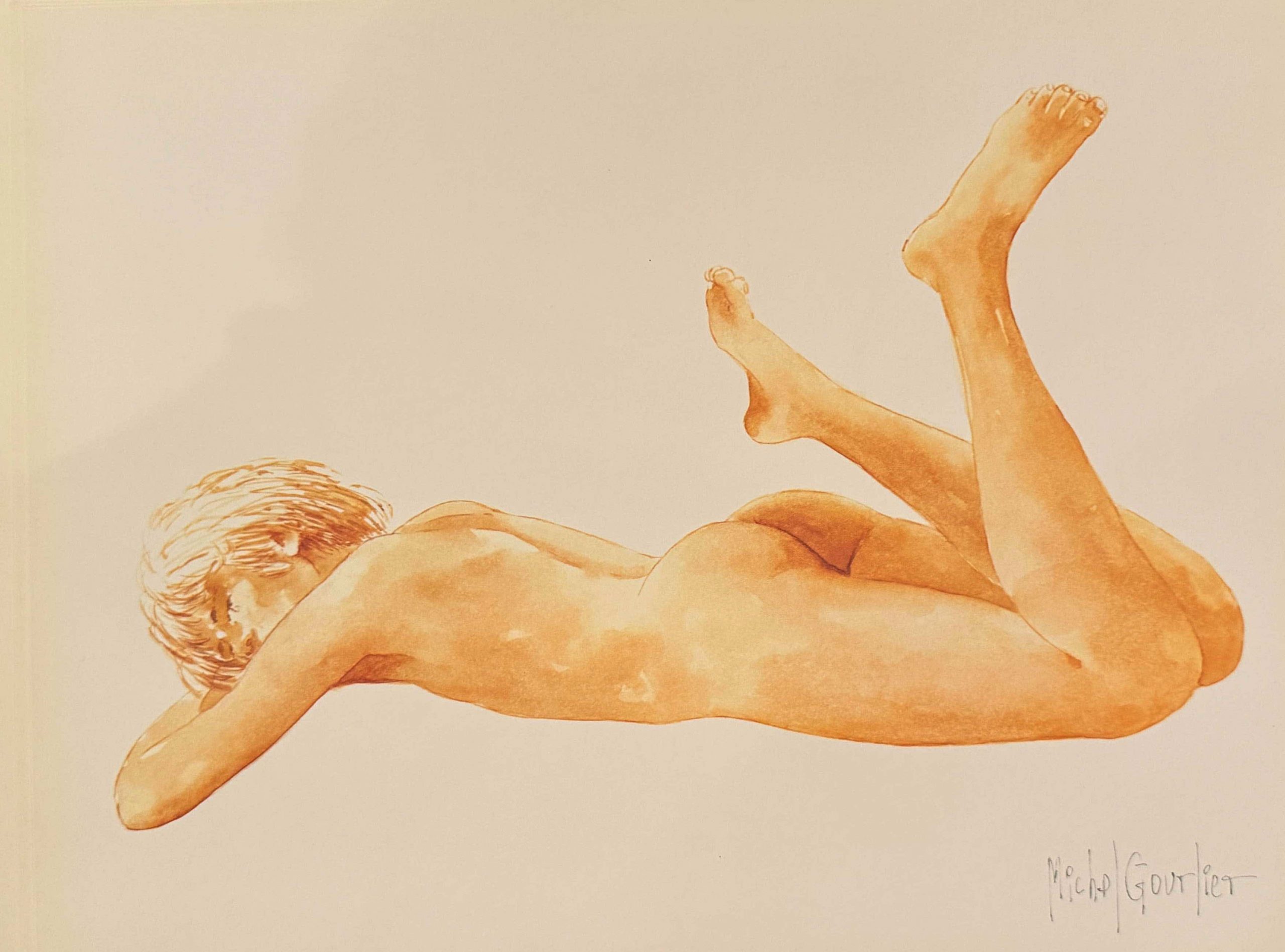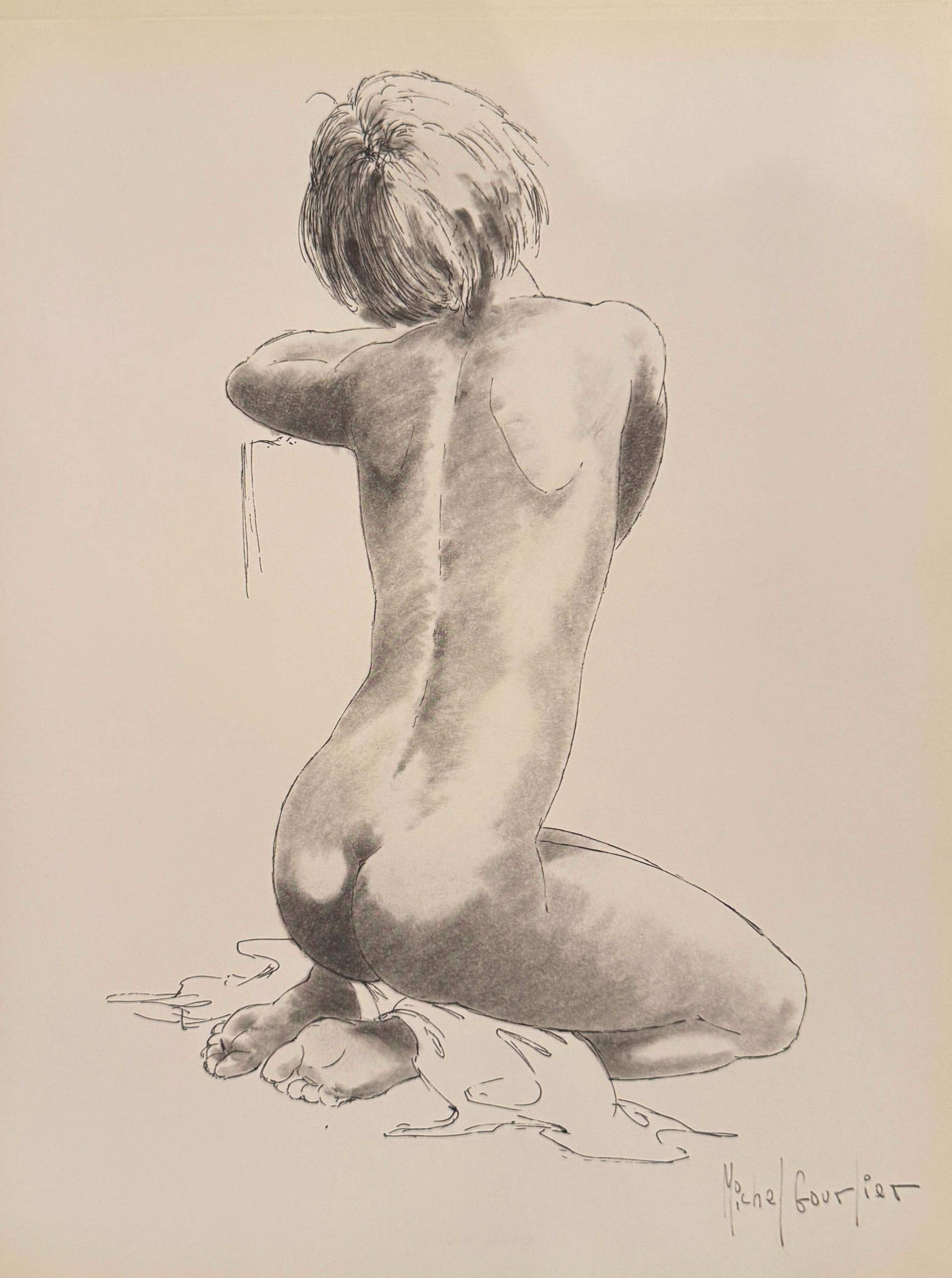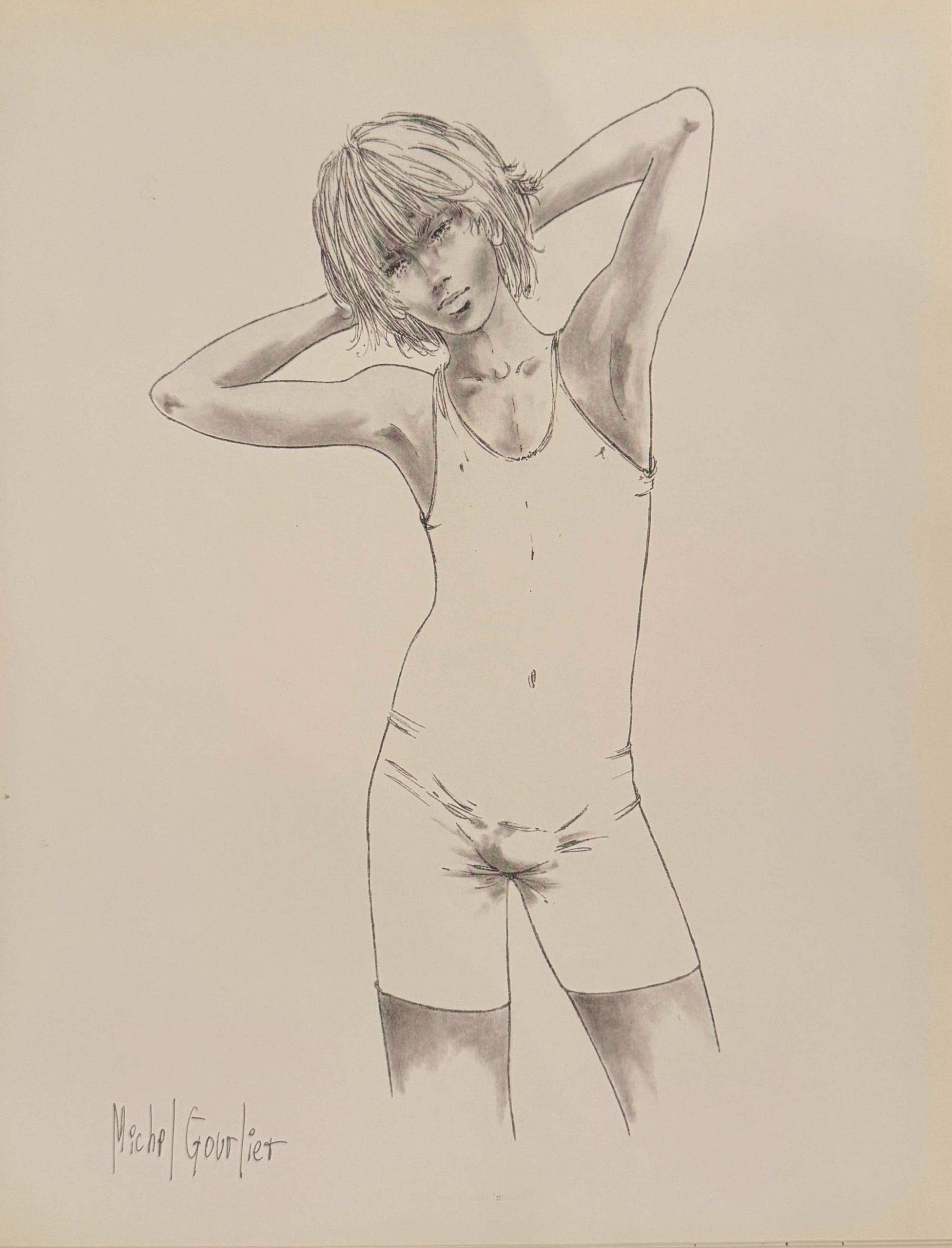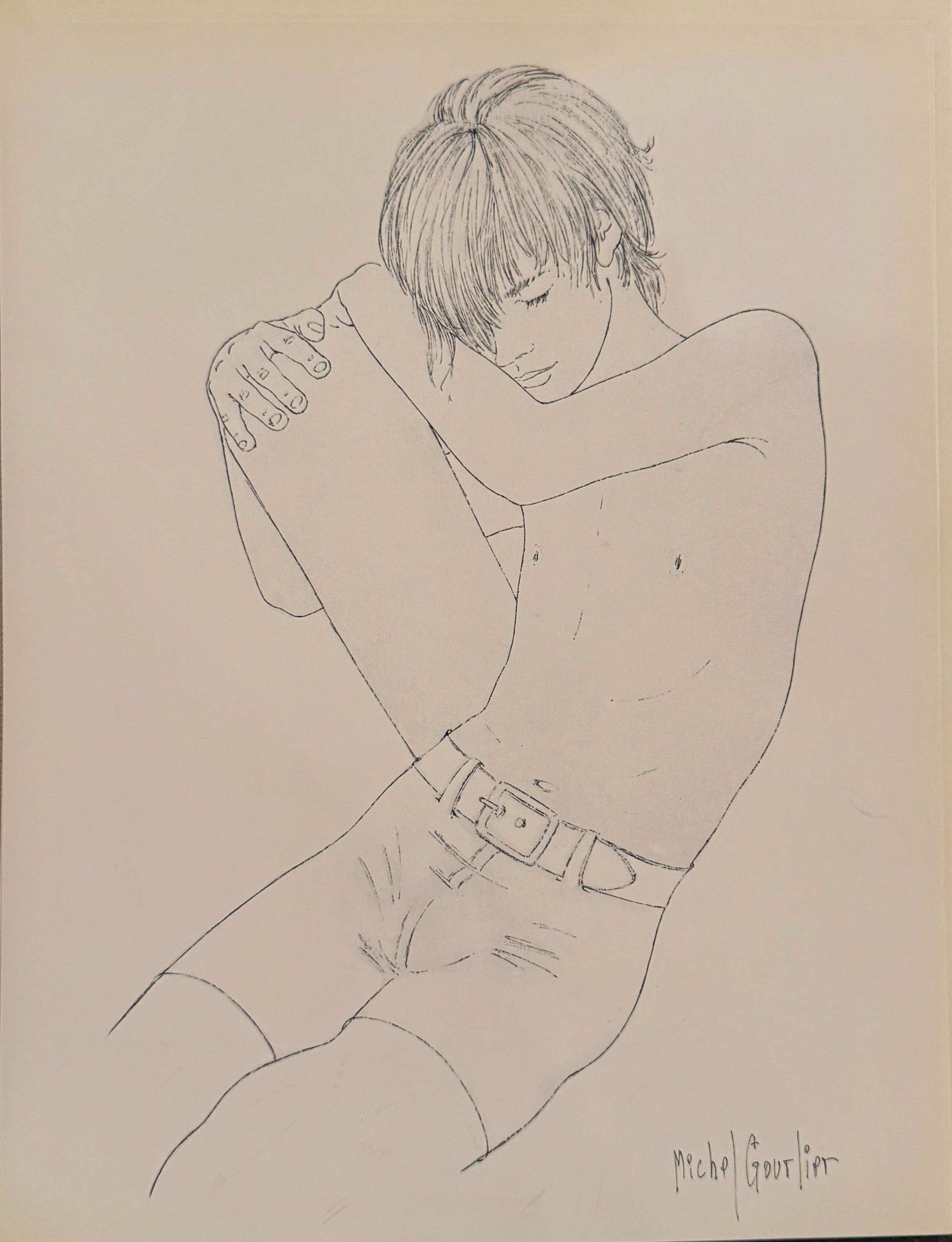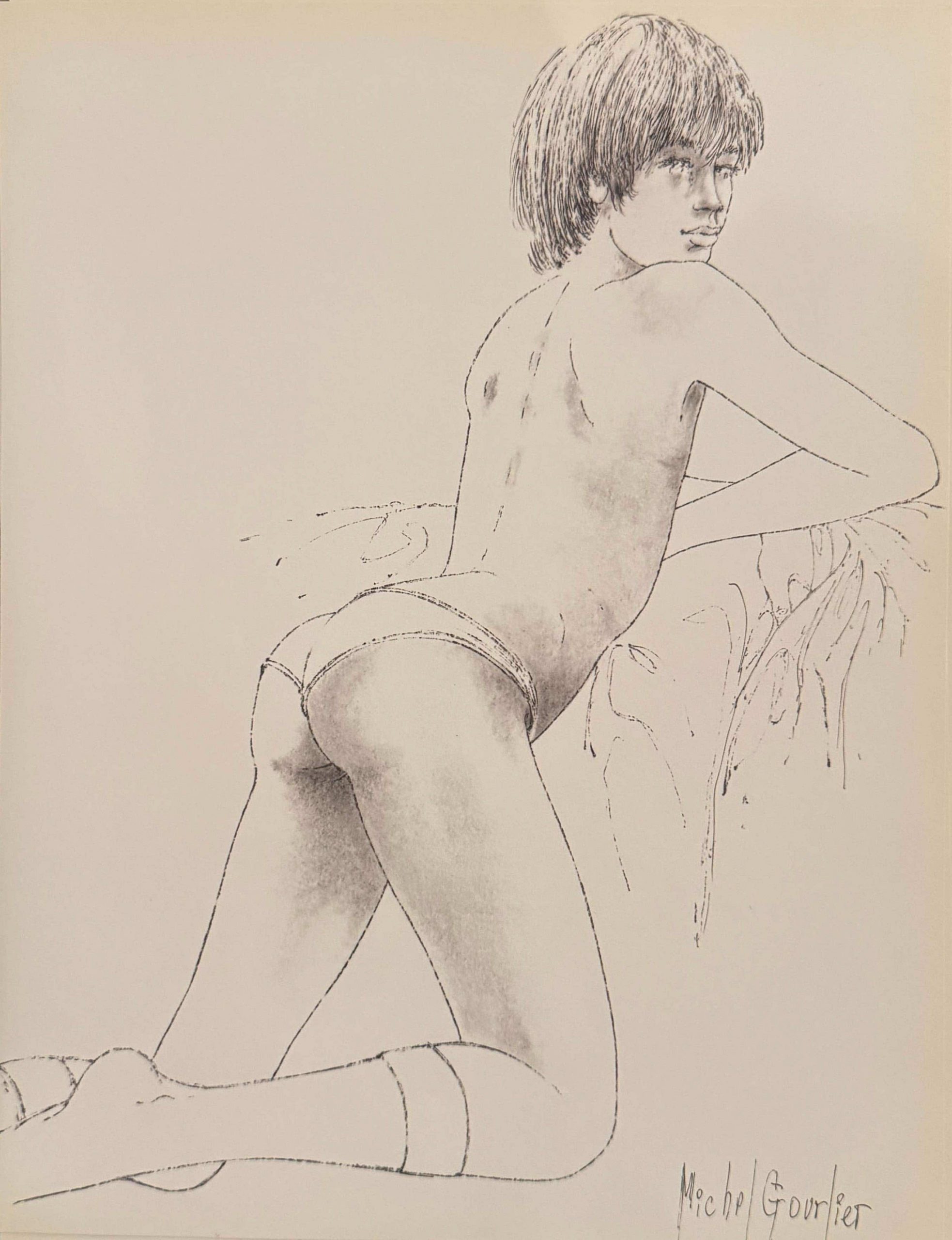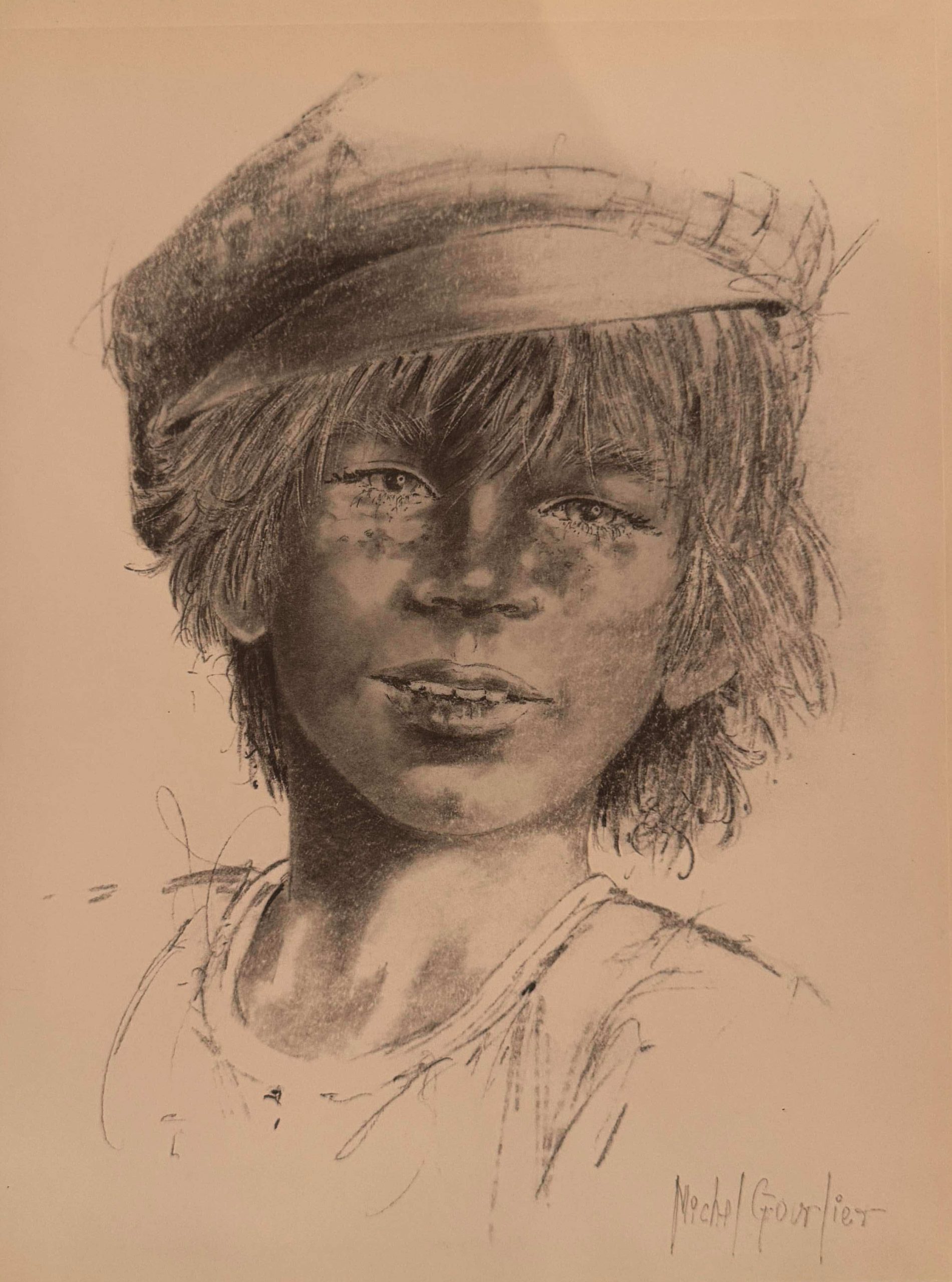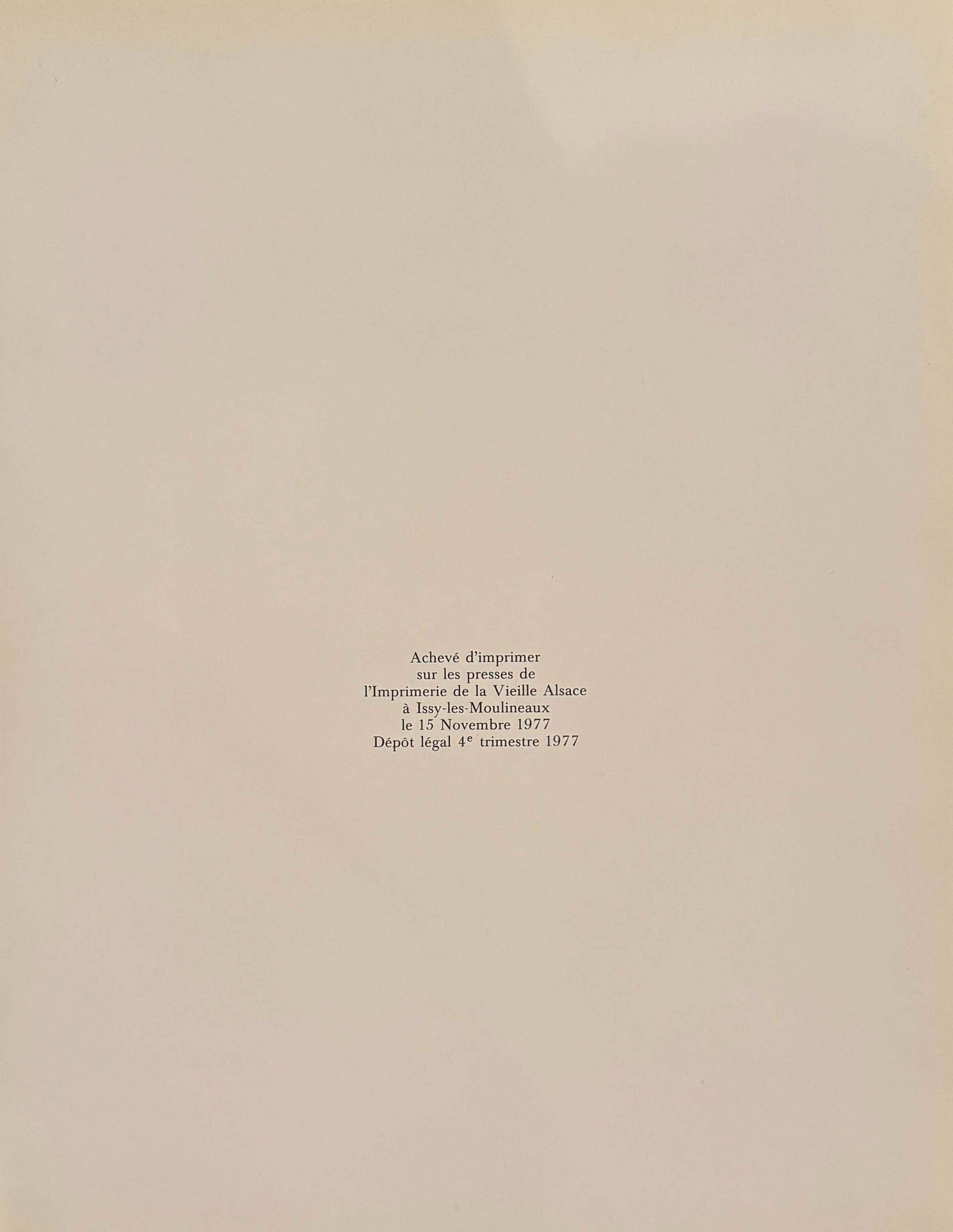The book titled 40 Dessins Inédits by Michel Gourlier, published in 1977, is a unique work within the field of illustration and self-publishing in late 20th-century Europe. It is a luxury cloth folder with a ribbon closure, housing a series of carefully executed lithographs on paper, in which the artist deploys a graphic language of agile, expressive, and at the same time intimate strokes.
The dimensions of the work (31.1 × 24.4 × 1.5 cm in the book and 32 × 25.5 × 2 cm with the slipcase) suggest a format designed for both private viewing and collection, typical of the limited and carefully produced editions of the time. The inside cover displays the artist’s handwritten signature alongside the date June 7, 1978, suggesting personalized or dedicated copies after publication.
Regarding the illustrations, Michel Gourlier focuses on portraits and intimate scenes, predominantly depicting young people and adolescents, whether in contemplative poses, playing outdoors, or engaged in close, affectionate relationships. The linear, almost nervous strokes are combined with areas of soft shading that generate an atmosphere of melancholy and visual poetry. The lines are not limited to outlining the figures, but rather construct ethereal environments, with backgrounds that evoke both natural landscapes (forests, rivers, reeds) and urban settings (canals and Venetian-inspired architecture).
The faces, with their delicate features and disheveled hair, convey an emotional intensity that connects with certain artistic pursuits of the mid-1970s, where youth, freedom, and emotional awakening were recurring themes. In this sense, Gourlier’s work can be linked to poetic figurative currents and contemporary French illustration movements, at the crossroads of editorial graphic design and the exploration of the intimate.
The collection not only reflects a technical mastery of engraving and lithography, but also a strong narrative component: each scene seems to capture a stolen moment, a fragment of life frozen on paper. When compared to other European artists of the period, one can find resonances with the sensitivity of draftsmen such as Pierre Joubert in his depiction of youth, albeit with a much more introspective and melancholic approach.
The piece, part of European culture of the 1970s, gains relevance as a testament to a way of artistic practice where the book-object becomes a privileged space for experimentation and preservation of graphic work. Today, these types of editions are sought after by collectors who value the rarity of the print run as well as the delicacy of the lines and the intimate nature of the images.
